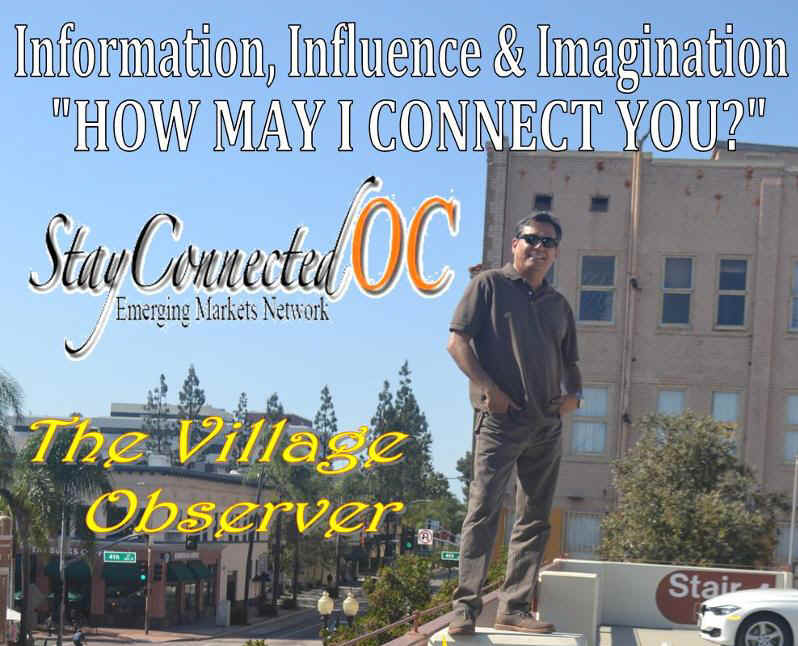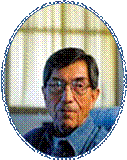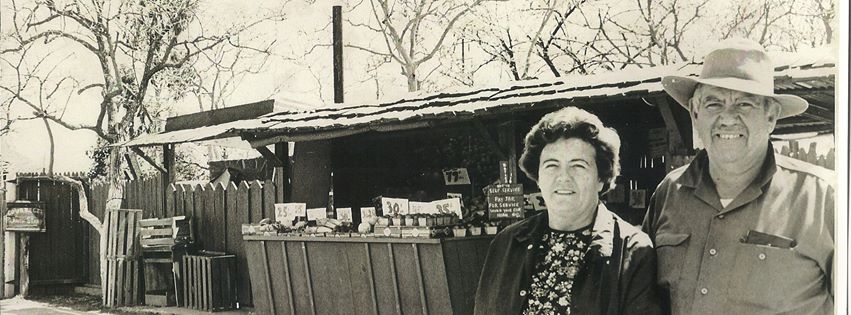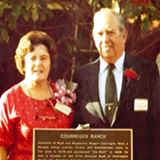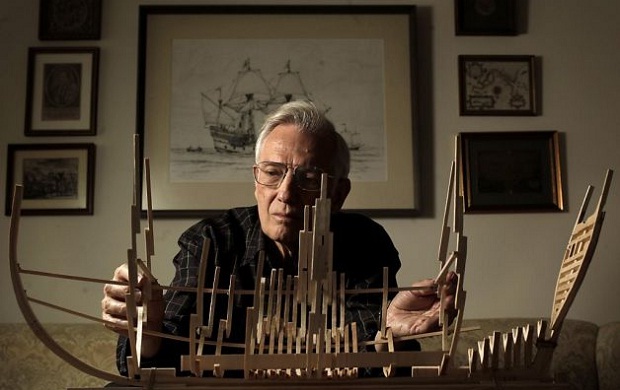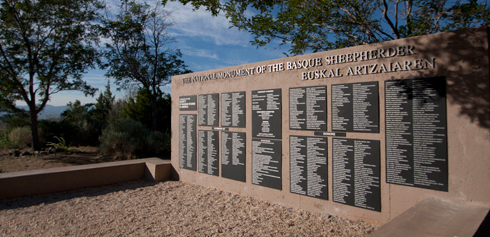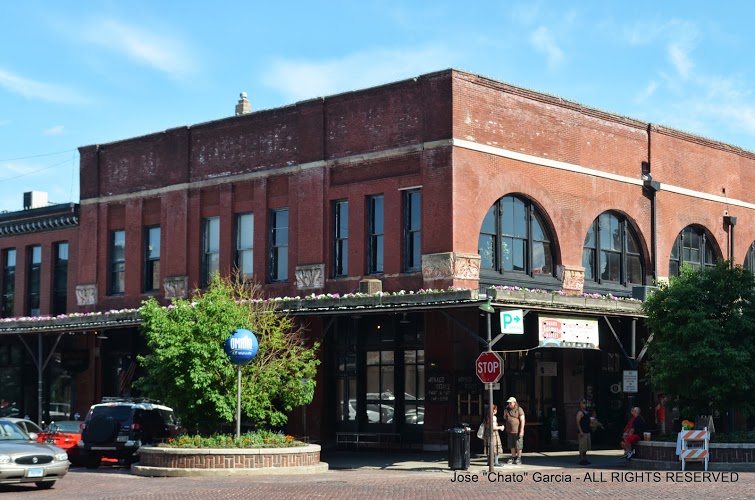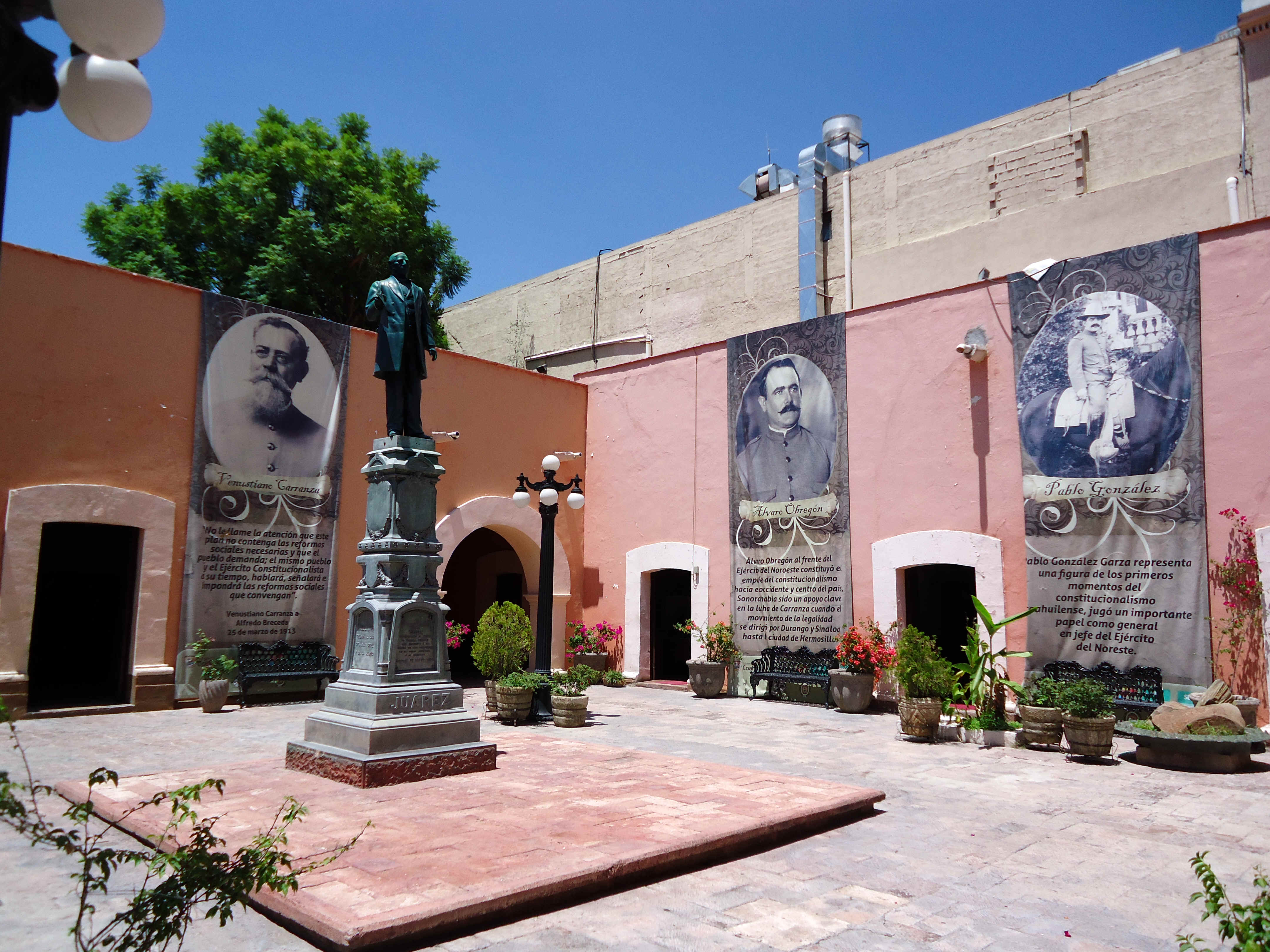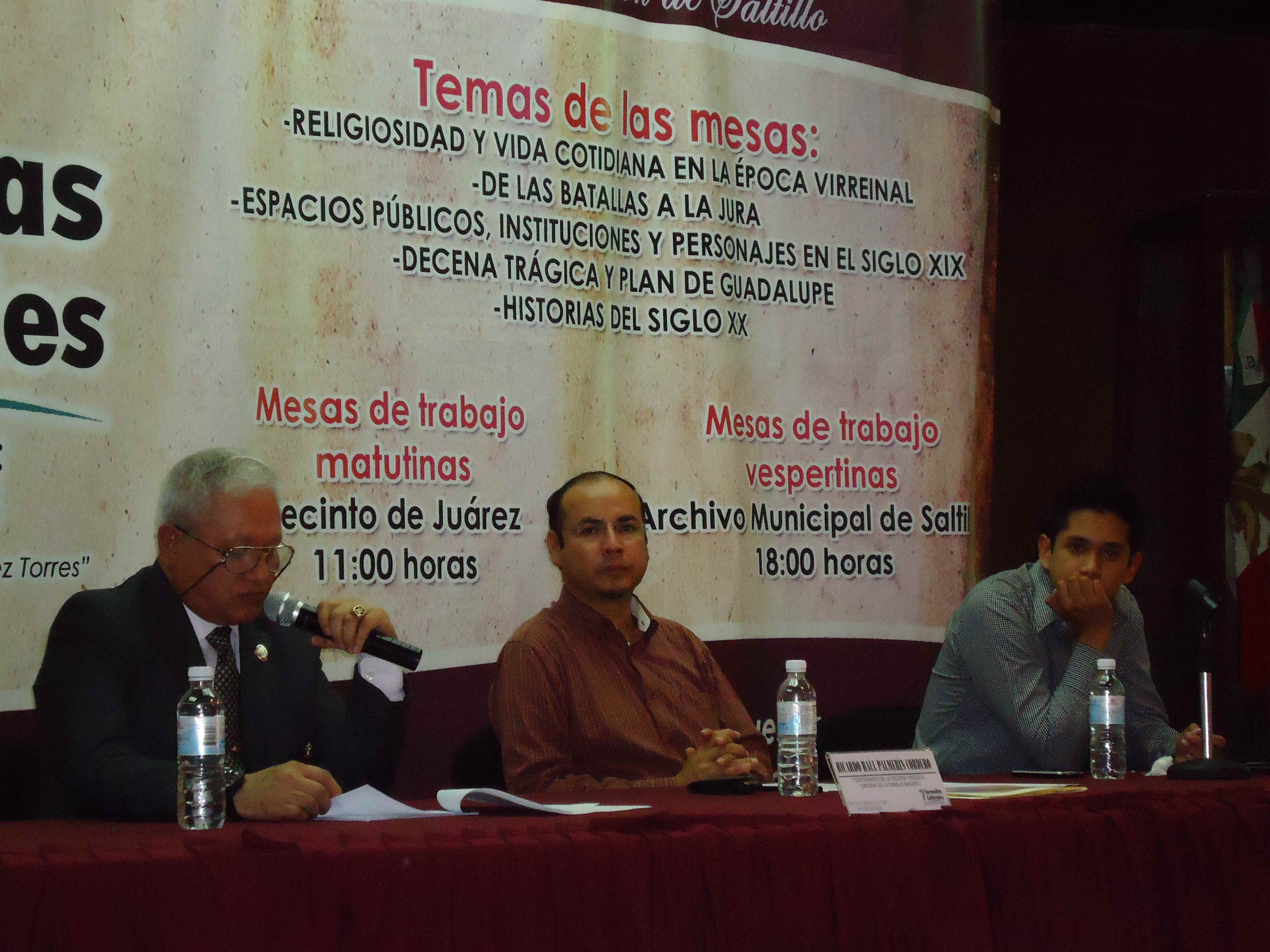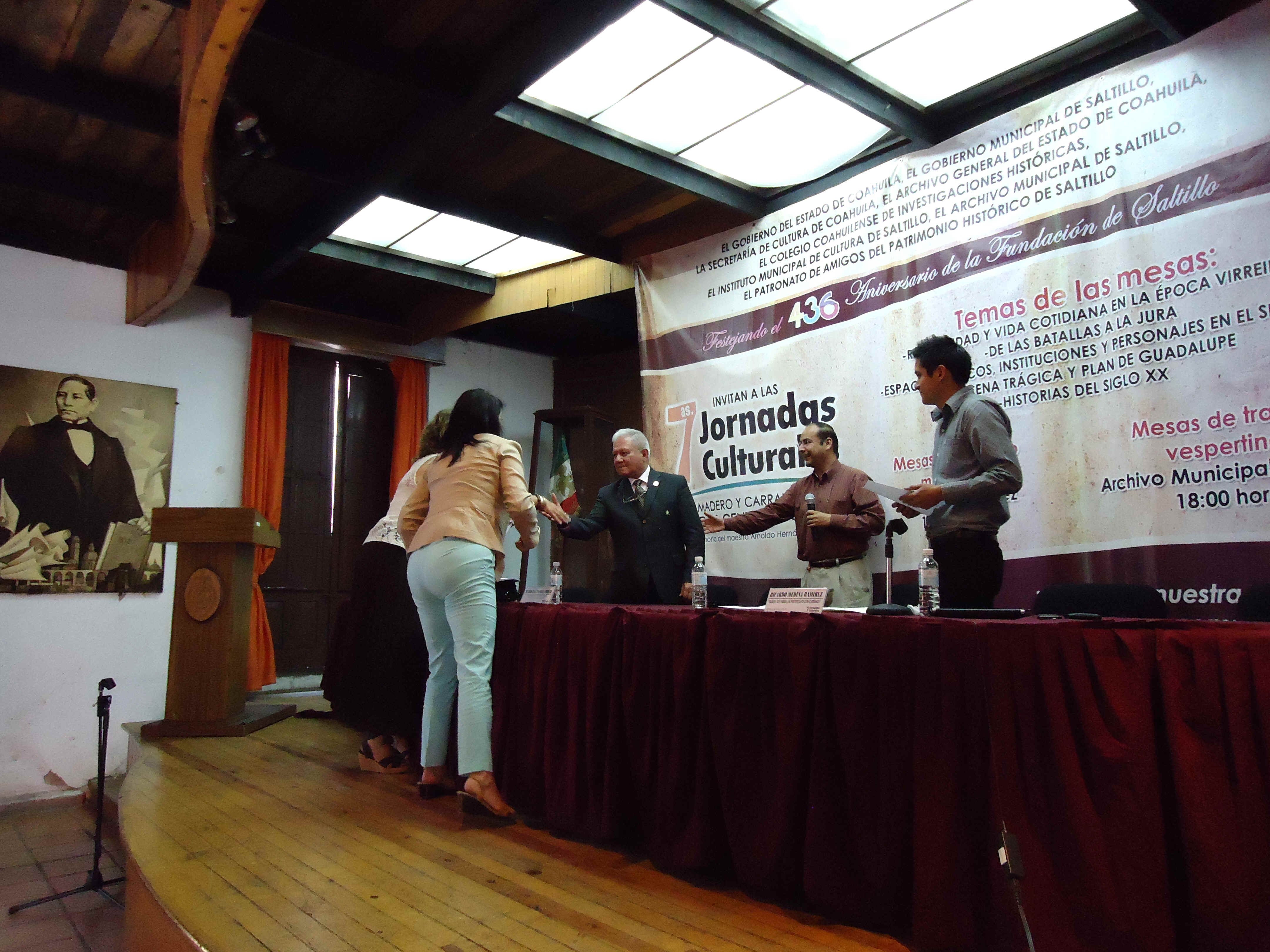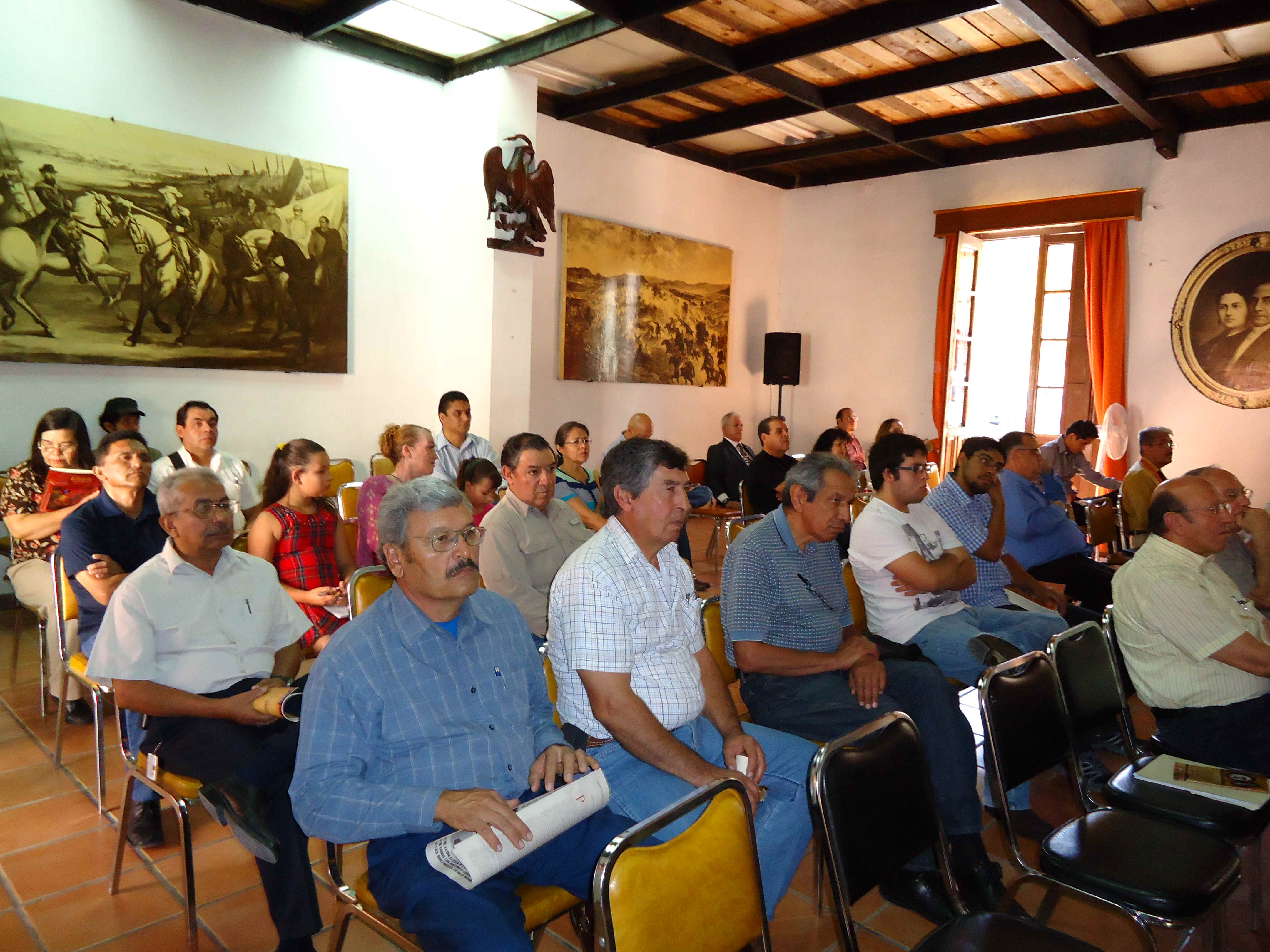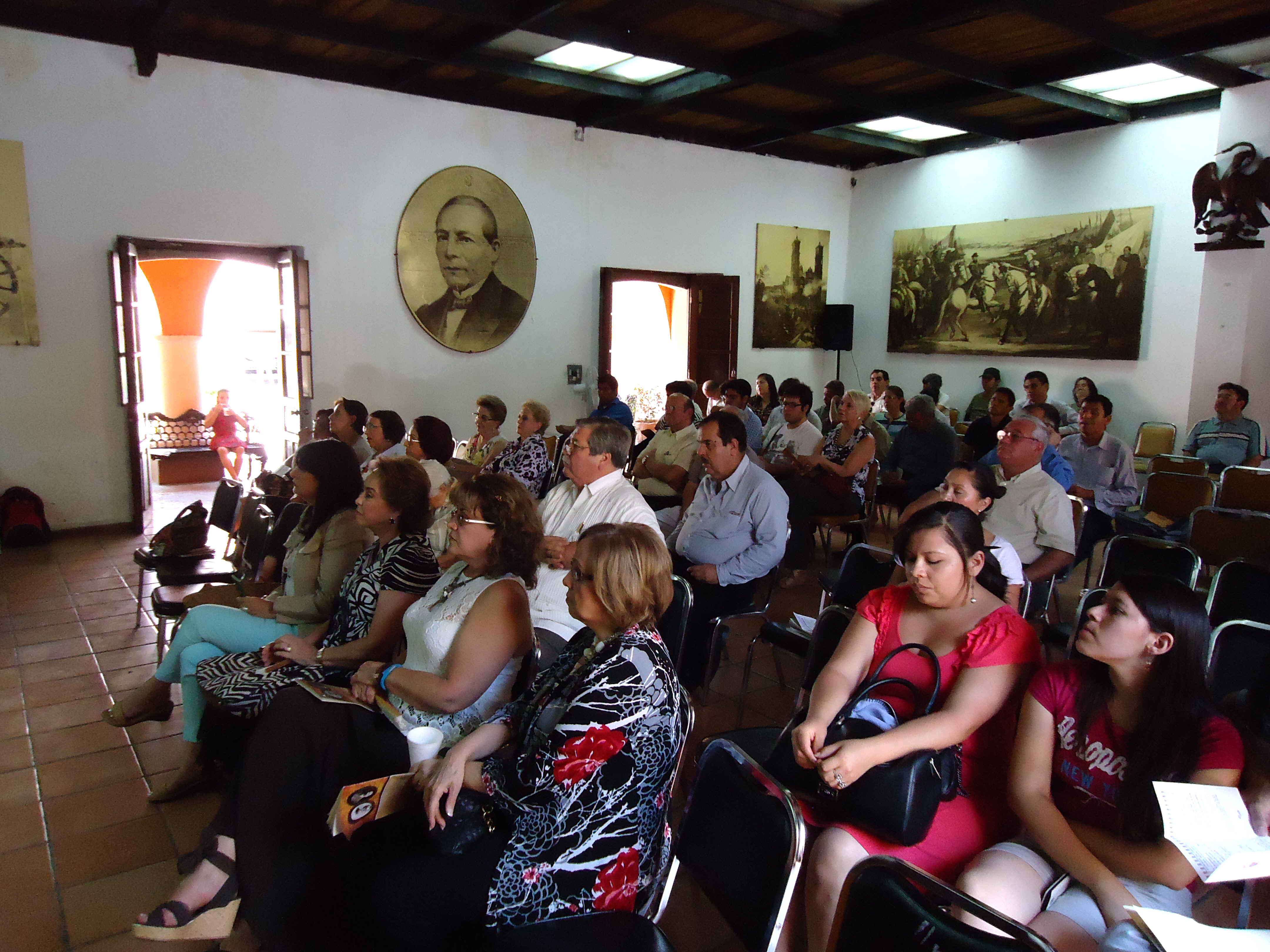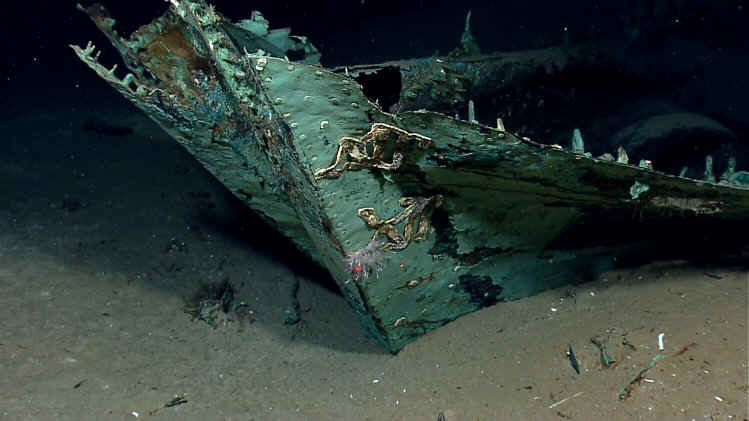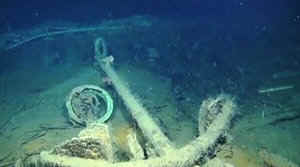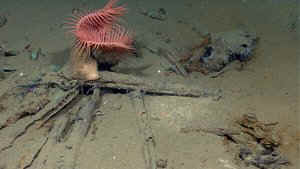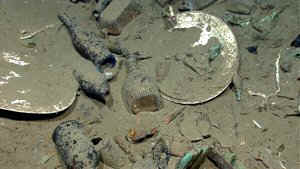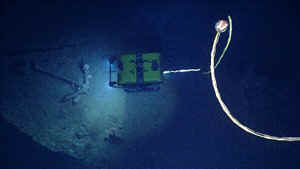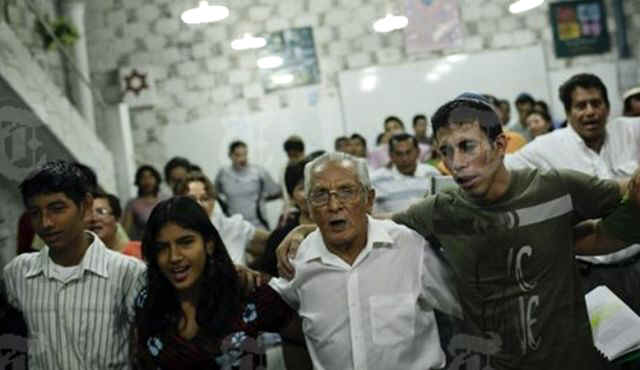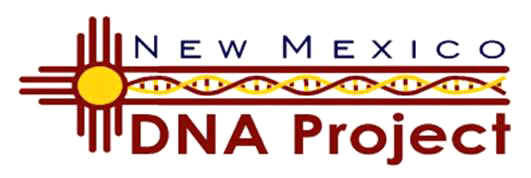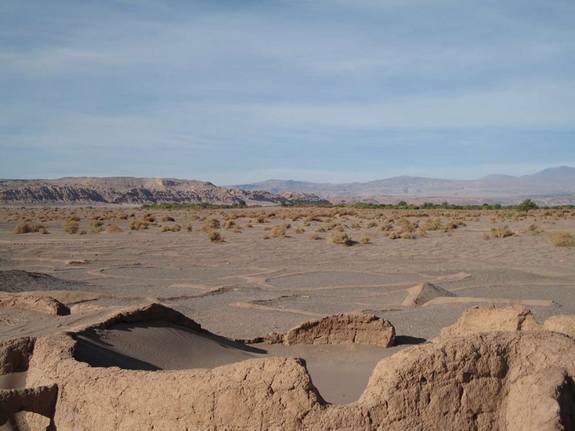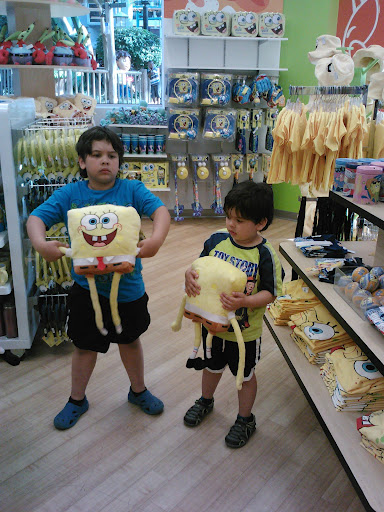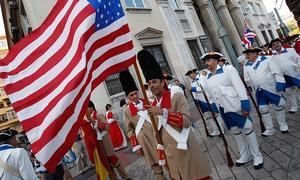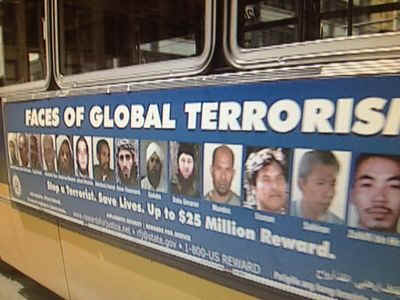|
The
Valley of Mexico is about 60 miles long and 30 miles wide.
It is encircled by mountains except on the north. Anciently,
this valley was an important trade center. The Aztecs were the
masters of the valley, and their capital city, Tenochitlan, [which
was built on an island in a lake in the valley] had a population
of 300,000 and was the largest city in the world.
It was beautiful, cultured, and luxurious.
In the mountains to the west lived another indigenous
people, the Purepeches, who
were avowed enemies of the Aztecs.
Christopher
Columbus arrived in the Americas in 1492 and came back three
times. One of the 1500
settlers
that he brought back with him to Hispaniola in 1496 was Hernan
Cortez. [We know this
because Cortez wrote letters home.]
No list of the settlers has been found; if one exists, it
will be located, eventually, somewhere in Spain or in Portugal.
Christopher
Columbus' travels were financed by the Royals of Eastern Iberia:
King Ferdinand of Aragon, who married Queen Isabella of
Castile. [She died in
1504 and he died in 1516.] Their
daughter, ''Mad Joanna,'' inherited both crowns and was ''Queen of
Espana'' from 1504 until her death in 1555, but never actually
ruled, due to her mental problems.
Her half-brother, Alonso de Aragon, ruled Aragon; Castile
and Leon were ruled by Archbishop Cisneros.
Mad Joanna's son by Philip, Duke of Burgandy, became king
[Charles I] in 1517 and combined both kingdoms into one country,
named Spain, in
1519; he ruled until
1554, when he was replaced by King Phillip II, who was the king of
Spain until 1598. Charles'
descendants, referred to as the Hapsburgs, ruled for almost two
hundred years. Phillip
III: 1598-1621; Phillip
IV: 1621-1665; Charles II: 1665-1700.
Before
1580 and after 1640, Portugal was separate from Spain.
[I doubt that any Portuguese settlers came to the Spanish
parts of the New World before 1580 although eventually, Portuguese
merchants did arrive in Nueva Espana.]
The surname ''Brito'' originated about 1200AD in a small
village near Braga, in Portugal; there are records beginning in
1558, handwritten in Portuguese, available in an LDS FHC film.
[There is no indication, however, of the origin of the
Brito people of Mexico.]
Seventeen
years after Christopher Columbus sighted land in the Caribbean,
Hernan Cortez [who had
helped settle the island of Hispaniola], one of the
Conquistadors, supposedly acting for the Spanish Crown as a
Christian envoy to these new people [but actually just greedy for
the gold that was said to be plentiful in Central America],
in November 1519 brought 400 soldiers, 16 horses, and
several Spanish cannons to mainland Mexico from Cuba.
When Cortez heard that the governor of Cuba had sent a
large number of ships and Spanish troops [led by Panfilo de
Naravez] to stop him,
Cortez returned to the port of Veracruz, overwhelmed Naravez,
imprisoned him in Veracruz and headed back to Tenochitlan. Naravez'
1000 Spanish soldiers—including Diego de Leon and Alvaro de
Leon--deserted him and fought for Cortez; the soldiers of Cortez
included Alonso de Leon, Gonsalo de Leon, and Juan de Leon.
Some of these Leons settled in Mexico.]
The
Aztecs, very alarmed at these violent strangers, sent messengers
to other tribes asking for an alliance to remove the threat.
Unfortunately, the messengers sent to the Purepeches were
used as a sacrifice to their war gods; the requested help never
arrived at Tenochitlan, and the future of the indigenous peoples
of the New World was forever changed.
The
Aztec people had a legend that an ancient god was to return that
year. The emperor,
Moctezuma
II, believed that Cortez was a divine envoy of Quetzalcoatl, the
fair-skinned, golden-haired god of civilization.
Moctezuma met Cortez with rich gifts and welcomed them into
the luxurious capital city, where the Spaniards took him captive.
The inhabitants of the city decided that Moctezuma was a
traitor and finally rebelled and stoned him to death on June 30th
1520, driving the
Spaniards out, killing most of the horses and 300 of the soldiers.
Cortez
and his remaining troops fled east where they were welcomed by the
Poyauhteca, a tribe who despised
the Aztecs and had never been conquered by them.
The Totonacs, another friendly tribe, joined the group and
fighting resumed. After
a long siege, during which the city of Tenochitlan's water and
other supplies were cut off, the capital city of the Aztecs fell
to the Spaniards and their native allies on August 13, 1521.
The
second largest most powerful tribe
of Native Americans, the Purepeches, lived around Lake Pazcuaro,
to the west of Tenochitlan in the Sierra Madre mountains.
These people, whom the Spanish mistakenly called ''Tarascan,''
lived in what is now the state of Michoacan.
They, too, were conquered.
[''Michoacan'' was derived from the Tlaxcaltecan name for
the Purepeches: They
who fish.]
The
Poyauhteca Indians who aided Cortez in defeating the Aztecs and
the Tarascans were originally a Chichimec people from further
north. After the
battle of Tenochitlan, they moved about 50 miles east and
established the state of Tlaxcala with the help of another
friendly tribe, the Otomis. [The
city of Tlaxcala was built at an ancient site of the
Olemecan civilization of the first century AD, which was
abandoned when the Aztecs conquered the area about about 500 years
before Cortez arrived.]
Mexico
City was built by the Spaniards atop the ruins of Tenochitlan.
For 30 years, the soldiers married or lived with Native
American women, [thus perpetuating their Spanish surnames] because
the Spanish king considered the New World a dangerous place
and would not allow single, unescorted Spanish women to go there
until after the Aztecs were conquered.
In
1531, the city of Puebla was established by colonists to whom
Spain had granted land and Indian slaves.
There are Britos and Leons in the early Puebla records [but
none that married each other.]
I think they came from the island of Hispaniola,
descendants of the settlers brought there by Christopher Columbus.
[Some of the settlers did bring their Spanish wives.]
The Britos show up in the records of Mexico City in the
1500's.
A
desire for land and wealth brought men to the New World, but the
Spanish King made a rule that only the men who emigrated to the
New World [the peninsulares] were allowed to hold public office or
to have good jobs; their children [the criollos] felt that this
was not fair, and because of this, willingly moved to the far ends
of Nueva Espana, where anyone of Spanish ancestry was the elite,
and rules were not as strict; some even lied about their past.
The children of Spaniards who married Native Americans were
even lower on the caste ladder, and were called Mestizos.
The African slaves, which are in the records as early as
1502, were on the bottom rung, and had various caste names
depending on their percentage of African blood.
There were only a few Spaniards; in the beginning, they
married the daughters of the Royal Natives.
Later, most of them in Mexico City married or had children
with the African slaves. All
of these part-Spanish children carried Spanish surnames.
The
Crown, in an attempt to create order in the colonies, banned
married men from going to the New World without their wives; if
they went anyway, the royal edict demanded that within two years,
a man had to either return to Spain or send for his wife.
[Since the Crown had no way to enforce this, it was an
invalid law.] Some of
the Spaniards took new wives in the New World, even though they
had wives in Spain.
Enough
Spanish citizens were arriving in Mexico that the Crown wanted to
establish more provinces; King
Phillip II told his highest representative in Mexico, Viceroy Luis
de Velasco, to offer this to their allies, the Tlaxcaltecan
Indians: Go north,
protect our settlers, pacify the Chichimec Indians of central
Mexico, and we shall make you nobility, shall guarantee you may
live in your own settlements, never have to be servants, never
have to sell property to Spaniards, always keep your land even if
you are not living on it, and never have to pay any tribute, such
as sales tax [alcabala], excise tax [sisa],
head tax [pecho], or any other form of taxes.
Furthermore, you and your descendants shall be permitted to
carry arms and ride saddled horses without penalty.
You will also be given whatever past or future exemptions
and privileges that are granted to the city and province of
Tlaxcala.
This
was very enticing because the Tlaxcaltecans were
craftsmen/traders/merchants; this would give them a financial
advantage over other traders.
The Crown eventually extended these privileges to the
Puebla Indians in the Original 1696 Spanish Peace Plan for New
Mexico, ending their jealousy of the Tlaxcaltecans.
Unfortunately, the peninsulares, criollos, and mestizos got
no such agreement, and forever after remained envious of these
''Mexican Indians.''
In
March of 1591, the Viceroy, Luis de Velasco, recruited 400 Indian
families to go north.
They were sent in four groups, and numbered 1500 people.
All of them came from Tlaxcala, the place east of
Mexico City which had been settled by the Native American
allies of Cortez, 70 years previously. They would have been the
great-great-grandchildren of the Indians who helped Cortez and his
Spanish soldiers subdue the Aztecs.
It is very probable that these emigrants were young, since
the majority had no children, or only children under the age of
three years. Most of
the rest had only a few offspring with them.
The oldest couple brought a 16 year-old boy.
The
lands of the Tlaxcaltecans were divided into four Altepemes, or
Districts, with the capital city of Tlaxcala in the center, and
the districts fanning out from there.
The Altepemes were groups of Calpulli, the religious,
economic, political, and social units of the Nahuatl people.
The leaders of these units were representatives, titled
Alguacil, Alcaldes, and Regidores—as translated into Spanish.
The
first group, 62 families from the Quiyahistlan District [which was
on the SW side of the land, and included nine pueblos plus the
city of Ixtacuixtla] came in 23 wagons which belonged to Rodrigo
Munoz; the captain of the group was don Lucas Telles; the other
leader was Don Diego Ramirez. Both leaders were Tlascalan Indians.
The only possible “Brito” in this group was a single
man, Agustin de Leon.
The
second group, 103 families from the Tizatlan District [the largest
district, on the eastern side, which included 14 pueblos plus the
cities of Zocac, Soltepec, and Citlaltepec], came in wagons
belonging to Pedro Gentil; the captains were don Buenaventura de
Paz and don Juachin de Velasco. Again, the captains were Tlascalan
Indians. [ have no
idea if Captain Velasco was related to the viceroy.]
There were no de Leons or Britos in this second group.
The
third group, 76 families from the Ocoltelulco District [on the
southern end, which included 17 pueblos plus the cities of
Zacatelco, Xicotzinco, and Mazatecochco], came in wagons belonging
to Juan Bernal; the captains of this group were don Lucas de Monte
Alegre and don Miguel de las Casas.
Both captains were Tlascalan Indians. [This is the group
that went on to El Reino de Nueva Gallicia, and settled in
Zacatecas as well as in Nuevo Leon, Jalisco, Coahuila, and Chiapas.
Some of these families went even further north, to New
Mexico, with don Juan de Onate in 1599;
their descendants may have joined the Reconquest with de
Vargas in 1692, or with Farfan in 1693 from Mexico City, or with
Hurtado in 1695 from Zacatecas.] There were no de Leons or Britos
in this third group.
The
fourth group was 99 families from the Tepetiopac District [the
northern end of the lands of the Tlaxcalans, between Quiyahistlan
and Tizatlan], who came in 28 wagons belonging to Rodrigo Garcia;
the captains were don Francisco Vasquez and don Juachin Paredes.
Both captains were Tlascalan Indians
There were two “Brito” families in this group:
Diego de Leon with his wife Francisca, and Miguel de Leon,
a single man.
These
people, born by 1570 or before, were Native Americans, but some,
probably with Spanish ancestors, already had Spanish surnames.
It is interesting to note, in later records, that children
of Indians who had no
Spanish surnames, were given the surname of their padrino upon
baptism. I was
very surprised at the lack of de la Cruz, Duran, Martin, and de
los Reyes surnames in the list of emigrants, because the Brito/Leon
families of Mexico and of early New Mexico intermarried with them
so often! Perhaps
those surnames were purely Spanish, or came to Mexico after 1591.
In
the following master list of emigrants,
I CAPITALIZED
those surnames which I found in the 1992 edition of the LDS
International Genealogical Index microfisches that are part of the
Leon/Brito records prior to 1725.
[If the surname is in my database prior to 1725 connected
to the Brito/Leon families, I underlined it.]
The
Spanish surnames of the Tlaxcalan Indians who emigrated north in
1591 were:
de
ALAMEDA, de Albis, ALVAREZ, Angel, de los ANGELES, de Aquino, de
Arranos, BAPTISTA, BARRELA, BASQUES,
BAUTISTA, Berdugo, CALDERON, CANO, Carabagel, de
Carceles,
de
CASARES, Cleofas,
Cole, Coltzin, Conego,
CORTES, Crisostomo, Daniel, DELGADO, DIAS, Ecol, Elias, de
ESCOBAR, FLORES, Galan, de Gante, GOMEZ,
GARCIA, GERONIMO, GONZALES, Grande,
GUTIERREZ, HERNANDEZ,
JUAREZ, de LEON, LOPEZ,
MALDONADO, Mar, MANUEL, de MENDOSA, de Mentses, de MOLINA,
MORALES, MUNOZ, de
Nabeda, Ocoma, Ocelopan, Ordaz, de Orient, Osoma, de Osorio,
de Padua, de PAZ, Pimental, PERES, de Perras, Poc, de Poloa, de
Porras, Puente, RAMIREZ, de RAMOS, RIBERA, de
RIVERA, RODRIGUEZ,
ROMANO, de ROSAS, de
Rosa y Ageda, RUIS, de RROSA, SALOME, Salomen, SANCHEZ,
de San Francisco, SANTIAGO, TELLES, Tesalo, Tiburcio,
Tochinpaine, de TORRES, de Vela, de VELAS,
de VELASCO, de VALENCIA , Verdugo, VARELLA,
VASQUEZ, Yacatzin, Yani, de Zarate, and de ZAMORA.
The
emigrants went north through what is now the Mexican state of
Hidalgo, which adjoins the state of Pueblo.
In July of 1591, at a stopping place called San Luis
Potosi, [about 2/3 of the way from Mexico City to Zacatecas] a
census was taken of the 340 Native American families in these four
groups.
This
census did not include anyone with the surname of Brito.
But, the most famous Brito of Santa Fe was born in Mexico,
supposedly in Zacatecas, [and his father, a merchant of Zacatecas,
who was born about 1645], claimed to be a Tlascalan Indian from
the Valley of Mexico. Perhaps
researching their maternal ancestors would prove the truth of
this. There were a few
de Leons in this census: Diego
de Leon and his wife Francisca, and two single men:
Agustin de Leon and Miguel de Leon.
These emigrants would have been born about 1565.
In
1595, a few years after the Tlaxcalan Emigrants arrived in San
Luis Potosi, Juan de Onate contracted with the Crown to provide
200 men for the ''discovery, pacification, and conquest of the
provinces of Nuevo Mejico.'' Onate
brought the Franciscan priests to New Mexico with him.
Onate,
born about 1552 near Zacatecas, was the son of Cristobal Onate
[who was a son-in-law of Coronado, another Conquistador].
Cristobal Onate was in the group of Spanish soldiers who
discovered and conquered the Zacetacos Indians and founded the
City of Zacatecas in 1548.
Juan de
Onate grew up in Sombrerete, a mining town near Zacatecas, where
he had listened to the stories of northern exploration, beginning
with Cabeza de Vaca's travels in the early 1500's.
Snow said that the ''colonists whom Onate brought north
were a mixed lot of peninsulares, criollos, mestizos, indios,
mulatos, Africans, and other Europeans.
Many of the 550 people, regardless of their stated place of
birth or origin, were recruited from among the areas of Nueva
Galicia and Nueva Viscaya,'' which contain what are now the states
of Chihuahua and Durango. When
asked where they came from, the Indians would give their ancestral
homeland; consequently, the early censuses do not usually state an
actual birthplace.
The
only census of Onate's group was the Gordejuela inspection of
1600. Two earlier
muster rolls showed that he started with 212 soldiers and ended
with 129, but 81 more were later recruited to make up for the ones
who deserted. This
Gordejuela inspection did have a few women in it; several were
Tlascalan Indians. There
were no Britos listed.
Snow
said that of the 550 people, 12 were mestizo, 10 were mulato, 4
were negro, and 21 were Indian men.
[Onate also brought his own Chichimeco Indian servants and
negro slaves with him from Zacatecas, but 60 of these escaped.]
Life in the colony of San Gabriel was not what the group
had expected. Mexico
City was tropical; Zacatecas was liveable; but New Mexico was in
the middle of the Little Ice Age! Desertions
were frequent, because hunger and hostile Indian raids resulted in
an impossible situation.
One of
Onate's soldier colonists, Juan Lopez Holguin, brought his
servant, Catalina de Villanueva, with whom he had fathered a
daughter who was baptized in Mexico City in 1592.
Catalina was a daughter of Chief don Joseph de Teapaca of
the Teapaca Pueblo in Tlaxcala Mexico.
[Chief Joseph
had three daughters; they and his granddaughters, Maria and
Marianna, emigrated to New Mexico as servants and are listed in
the Gordejuela inspection.]
Chief
Joseph's daughters were
1] Catalina de
Villanueva [with her daughter Maria], who married her master, Juan
Lopez Holguin,
in San Gabriel del Yunque, about 1603; they had several
more children in New Mexico.
2] Agustina,
who married Francisco de Tlaxcalla—another servant of Juan Lopez
Holguin—
before they emigrated to New Mexico.
3] Maria,
whose daughter Mariana was born in the Teapaca Pueblo in Tlaxcala
Mexico about 1590
[I am not sure whether it was one of the Marias or Mariana
who married Mateo Naranjo, the
branded Negro who came from the Pueblo de Los Angeles, near
Mexico City.]
As for
the de Leon Conquistadors, a few records do exist.
About 1565, Antonio de Leon, native of Cadiz, Spain,
married; his son, Juan de Leon, was born in Malaga, Spain in 1568;
Antonio and Juan emigrated to the New World, where Juan de
Leon married Francisca de la Cruz on 18 Jan 1584 in the Santa
Veracruz chapel of Distrito
Federal, Mexico. No
records of Francisca's
parents or of any children from this marriage have been located.
[She probably died; he was likely the
Juan de Leon who came to New Mexico with Onate in 1598, and
stayed until at least 1602, when he went to Mexico City with a
group of other loyal colonists to defend Onate at the viceroy's
court.]
Five
years after Juan and Francisca married,
Antonio de Leon married Maria Gironima in Santa Veracruz
chapel, Distrito Federal, on 28 Dec 1589.
No further records have been located for this couple, but
on 23 Nov 1597, records show that
Antonio de Leon married,
in the Sagrario Metropolitano chapel of the Puebla de Zaragoza, in
the state of Puebla Mexico, with Elena Garcia. It is not known if
he was the man who married Maria Gironima.
[The state of Puebla is east of the Distrito Federal, and
south of Tlaxcala.]
In
1619, Luis de Leon and Maria de Cabrero had a son in Puebla.
The de
Leon family is huge, and includes many immigrants to the New
World. We have records
of the children of Adriana de Leon, born about 1577 in Castilla,
Spain. She married,
before 1608, with Lorenzo Perez of Castilla.
They had three children of record:
1- Alonso de
Leon, born in 1608 who married Josepha Gonzales from Hidalgo
Mexico at Mexico City in 1635, before they left for her hometown,
where they were veiled the next year.
[They
had a large family; one son, Juan de Leon, was born in 1636;
another, Miguel de Leon, who married Francisca Ayala, was born in
1653.] Alonso finally
settled in Montemorelos, Nuevo Leon, which is NE of Zacatecas.
He built a Hacienda, which his family shared with his
brother's family.
2- Juan Perez
de Leon, born 1611 in Mexico City, who married Elena Gonzales in
1636 in Queretaro, which is halfway between Mexico City and San
Luis Potosi.
3- Joseph de Leon, who left two children, died in 1657 in
Alonso's home.
Juan de
Leon married Polonia Rodrigues in Queretaro in 1674.
Northwest
of Queretaro is Guanajuato, where Miguel de Leon married Madalena
Doni; their son, Diego de Leon, was born there in 1637.
In
Hidalgo, [which is north of Mexico City and east of Queretaro]
Diego de Leon and his wife, Ana Maria, baptized a son in
1631—Juan de Leon.
In
1645, again in the state of Hidalgo, a Francisco Leon requested
the baptism of his relative,Juan Leon
[parents and birth date unspecified].
In
1688, Juan de la Cruz de Leon married Magdalena Maria in Hidalgo.
His parents were Juan de Leon and Ysabel Maria.
Another
de Leon family in the 1600's was Ortiz de Leon of Mexico City.
None
of these people are in the Passajeros de Indias [1492-1599]
records of Spain, nor in the Libros de Asientos [1509-1701], which
the ship captains recorded; they
may have come from the Island of Hispaniola, which was the first
landing place of Christopher Columbus in the New world in 1492.
In 1493, he brought 1500 settlers back from Spain, but most
of them left before 1550 because they could not find gold.
There
is a researcher in the
Dominican Republic, Vilma Benzo de Ferrer, who has spent her life
serving her country, and is a knight there.
She researched the Spanish Colonization of the island of
Hispaniola and published a book on that in 2000.
She explained that ''The list of passengers contained here
is only part of those who arrived on the island between 1492 and
1550. For five years I
have been researching and cataloging each of them and have not
been more extensively by the desire to publish this work without
further delay.'' [She
was in her 70's!] PASAJEROS
A LA ESPANOLA 1492-1530 contains one Brito man, Fernando de Brito,
who enters the records in 1509.
There is also a woman, Felipa de Britos, whose record
begins in 1574.
There are a lot of Leons:
Alonso de Leon, 1502; Alvaro de Leon, 1528; Andrea de Leon,
1512; Baltasar de Leon, 1507; Cristobal de Leon, 1493; Diego de
Leon, 1509; Juan de Leon, 1493; Licdo. de Leon, 1528.
In 1606, King PhillipIII ordered the remaining settlers to
either move to the mainland or return to Spain, because he could
no longer guarantee their safety due to the wars.
[He declared bankruptcy in 1607.]
David
Snow's book, NEW MEXICO'S FIRST COLONISTS, does not include any of
the early de Leons of Mexico in the list of Onate's 1598
settlers of New Mexico. Snow
does have Cristobal Brito with his servant [Juan, a Tarascan
Indian who came from Patzcuaro in Nueva Galicia] in Onate's group.
He also has Gregorio de Leon, [who owned a silver mine near
Zacatecas in the area of Somberete in Nueva Galicia] and his
unnamed servant. Both
of these soldiers said they were from the Canary Islands of Spain;
both deserted Onate's colony a few years later along with
Bartalome de Leon and Francisco de Leon.
The
paternal grandparents of Jose Juan de Leon Brito of Santa Fe are
unknown at this time due to a gap in the records, but it is
improbable that he is a descendant of
Crystobal Brito's servant, since the father of the Santa Fe
man used only the surname de Leon.
On the other hand, perhaps his maternal line contained the
Brito surname. Actually,
I think Jose was born in the state of Hidalgo in Mexico.
When
Crystobal Brito deserted Onate's Colony of San Gabriel in 1601,
his servant, Juan--the Tarascan Indian--also left New Mexico.
We do not know whether they went to El Paso, Zacatecas, or
Mexico City. Most of
the deserters fled south to Santa Barbara, [in the state of
Chihuahua, Nueva Viscaya] about 375 miles south of El Paso about
halfway to Zacatecas. These
people were later pardoned by the Crown.
The
remaining 185 loyal colonists petitioned Viceroy Velasco in
October 1601 that they be allowed to return to Mexico, ''before we
all die of starvation or of Indian attacks.''
The petition was carried to Mexico City; they delivered
Onate's resignation to Velasco, who appointed a new governor.
Onate left New Mexico and returned to Mexico City in 1609.
[His son, Cristobal Onate, was acting governor until don
Pedro de Peralta arrived in late January of 1610.]
The ''loyal colonists'' included Juan de Leon, age 30, the
son of Antonio de Leon of Cadiz or Malaga Spain] who witnessed
several of the letters to the Viceroy, and went to Mexico City to
testify for Onate in court. We
do not yet know of this Juan de Leon's descendants, or if he
returned to New Mexico, or what happened to the unidentified
servant which he brought with him to San Gabriel, or if he had
other relatives in the New World.
Onate
promised land to any of his settlers who stayed in San Gabriel for
five years. Juan de
Leon, Onate's loyal soldier, would have qualified for land; as a cavalry
soldier, he would have received a Caballeria [approximately 106
acres.] plus a house site, a solara, in Santa Fe.
This
Juan de Leon, who was
likely born in Spain in 1568, could have been a paternal relative
of the three de Leon men—Agustin, Diego, and Miguel—who came
to Zacatecas in 1591 from the Valley of Mexico.
He could also have been an ancestor to the Jose de Leon
that witnessed a letter sent by Captain Paez Hurtado in Zacatecas
in 1694. Perhaps he
was the great-grandfather of Jose Juan de Leon Brito of Santa Fe?
The
censuses of 1680 to 1695 of Northern Mexico—Caencame, Conchos,
Cases Grandes, Durango, Gallo, Janos, las Cruces, Nueva Viscaya,
Parral, San Buenaventura, San Lorenzo, Santa Barbara, and Sonora
would have records of the deserters of San Gabriel as well as some
of the survivors of the 1680 Revolt, and should be searched.
There
is no record of any Leons or Britos in Otermin's 1681 list of
Santa Fe refugees in El Paso, nor are there any in the 1684 El
Paso census, but the households of #150 through #196 might show
them living with friends or relatives.
Hackett,
in his book, The Pueblo Indian Revolt of 1680, states that a few
people of the Rio Arriba survived by escaping to the east across
the Rio del Norte.
Other
than the de Britos in Hispaniola, the earliest Brito records of
Mexico are of two men from Spain:
Francisco Gomez de Brito, born in Seville
in 1531, who immigrated to Mexico, and.
Francisco Gonzalez Brito y
Sosa, born in 1560 to Albaro Gonzales Brito and Ysabel
Mendez de Sosa, who married in May of 1585 in Mexico's Distrito
Federal, with Magdalena Martin Y Gomez, who was born in 1562 in
Puebla, Mexico. [It is unclear how these people were related, or
whether their descendants married into the de Leon family.]
The
Juan Jose de Leon in Zacatecas for whom we are searching was born
about 1645, so there is still a gap in the records.
He said he was a Tlascatean Indian from Tlascala
Mexico—but since the Indians traced their origins through the
maternal line, he probably had Spanish paternal roots.
Juan Jose was
a
citizen of Zacatecas and became a retail merchant there.
He married a daughter of a well-to-do family about 1665,
and they had two sons and two daughters.
It is very likely that Juan Jose and his first wife,
Antonia Ursula Varella Duran, who was the daughter of Juan Juarez
and Polonia Duran of Zacatecas, [He could have been a Tlascalan
Indian, since there were several Juarez
people in the 1591 census at San Luis Potosi] went north
with one of the government supply trains, liked the
country, and settled in Santa Fe, but returned to Zacatecas about
ten years before the Pueblo Indian Revolt of 1680.
However,
ten years later, in Santa Fe, Ursula's son,
Jose Juan de Leon Brito married a servant of Sargento Mayor
Luis Granillo, who was in the El Paso Census of 1684 with a family
of 15 persons.
[Granillo took in several of Onate's Orphans.]
Another servant was the mestiza, Maria de la Cruz, who
wanted to marry Sebastian Rodriguez Brito in 1696 but didn't.
[The following year, Sebastian married Juana de la Cruz, a
coyota of Salinas. She
was probably the Juana de la Cruz who was gifted a house by Jose
Juan de Leon Brito in 1713.]
Sebastian
Rodriguez Brito was an interesting person, to say the least.
He was a black slave born in Portuguese Africa about 1642,
the son of Manuel Rodriguez and Maria Fernandez.
He came to Mexico City and
then to El Paso and was the servant or slave of
Pedro Reneros de Posada, the New Mexico Governor, from 1686
to 1689. Later he was
the Tambor General [drummer] of
the El Paso Presidio. Why
Sebastian began using the Brito surname about 1689 is unknown.
Perhaps he was originally purchased by Sebastian Brito of
Cadis, Spain—whose son, Joseph Brito y Serrano married
Eufrasia Maria de los Rios in 1715 at Guanajuato, Mexico?
[Guanajuato is NW of Mexico City.]
At any
rate, when Sebastian
Rodriguez Brito requested to marry Antonia Naranjo in 1689 in El
Paso, Posada--who was about to return to Mexico City--did not want
to lose him, so he said that Sebastian had a wife in Vera Cruz.
Later, Posada admitted that he had lied.
[Posada probably freed Sebastian before returning to Mexico
City.]
In
1691, Sebastian requested to marry Isabel Olguin, a daughter of
Cristobal Olguin and Melchora de Carvajel.
[Isabel was the grand aunt of the Antonio Olguin who
married the daughter of Jose
Juan de Leon Brito. She
was also the widow of Francisco Madrid, who had died in 1690.
It is unknown how Francisco was related to Sebastiana
Madrid, the first wife
of Jose Juan de Leon Brito.]
The
Zacatecas census of 12 Feb 1671 lists Jose de Leon, Ursula Duran,
Catalina de la Cruz, and Sebastiana [a child?] in Casa 25, the
household of Nicolas
de Saldana. Unfortunately,
the margin notes were not included in the book by Hendricks &
Colligan, so we do not know if these people were servants,
relatives, or friends.
[There
was another Antonia Ursula Duran, possibly a cousin, in the 1692
census of El Paso.]
Our
Ursula died sometime between 1671 and 1679, probably in Zacatecas.
Jose drew up his will in May 1679.
That document is in the Historical Archives of Zacatecas,
as well as an earlier inventory of his possessions.
The inventory stated that he owned a mulata female slave
named Elena, three houses in Zacatecas, and his business, as well
as some gold and some silver.
It did not mention any livestock.
His business was to sell ''trifles'' [sounds like a dollar
store!]. He intended
to give his deceased wife's dowry to his grandchildren and to
marry again. The will
said that his mother-in-law wanted him, instead, to give the dowry
to their four—unnamed—children, which he did.
Later records give the children's names as Marcial Leon,
Catalina de la Cruz Leon, Sebastiana de Leon, and Jose Juan de
Leon Brito. We have the descendants of only two.
One
interesting side note: There
was a Juan de Leon who married Maria Romaulda Luna in Corpus
Christi de Isletta in 1693. [This was probably Corpus Christi de
Isleta del Sur, near El Paso.]
He was a ''mulato of unknown parentage, driver of the
King's wagon trains and a native of Real y Minas de Sombrerete.''
I suspect that he was related to Elena, and possibly also
to Sebastian Rodriguez Brito.
There
is a Sebastiana de Leon, married to Diego de San Nicholas,
baptizing sons in 1660 and 1661 in Pachuca de Soto, Hidalgo,
Mexico, and a Sebastiana de Leon who married Diego Rodrigues in
1688 at Tula, Hidalgo, Mexico.
Jose and Ursula's daughter Sebastiana drew up her will in
Zacatecas in 1684, saying that she had outlived both of her
parents. [We have no death records for either of them yet; perhaps
she thought that her father had died in the Revolt.]
The will does not state if she was married, or where she
lived.
Juan
Jose de Leon's second wife, Ynes de los Telles
[was she Indian or Espanol?] was born in 1652, emigrated to
Nuevo Mejico, where she married him in El Paso del Norte, and died
a widow in Santa Fe on 21 July 1732. We do not know where or when
they met, nor do we know her parents' names.
Perhaps she was a relative of the Rafael Tellez Jiron, born
in New Mexico in 1660, who was listed in Otermin's 1681 Paso del
Norte list.
Some
researchers say that Juan and Ynes had a child named
Diego, who married Francisca Abeyta [whose husband, Diego
Brito, died in 1731 in Santa Fe].
There is a Diego Brito, going to Chihuahua in 1715 with
Juan Antonio Brito and Domingo Brito, in a list of travelers of
1712-1716. [This was
probably the Domingo Julian Brito who
married Maria Ledesma in 1732 and then Maria Fajarda.
He died in 1752 in Santa Fe. He could have been the Julian
Leon who owned a house in Embudo in 1751, and he could have been
named for Domingo Naranjo of the Picuris Pueblo, the father of
Jose Lopez Naranjo, but no records have been located yet
supporting this.]
There
were Telles people in Hidalgo
[Old Mexico], in El
Paso, and later in San Miguel del Bado,
New
Mexico. The earliest
Telles I have found was Captain don Lucas Telles, who in 1591 led
a group of 92 families
from the Quiyahistlan district of Tlaxcala—which was east of
Mexico City in the Valley of Mexico—to El Reino de Nueva
Gallicia to colonize Jalisco.
Don Lucas Telles' wife was dona Elena; their five-year-old
daughter came with them. In
this group was also Agustin de Leon.
Other Telles emigrants [Diego Telles, his wife Maria, and
their five-year-old son Francisco] came in the second group of
Tlascalan Indians, those from the Tizatlan district.
This second group were sent to Nueva Viscaya to colonize
what is now Nueva Leon and Coahuila.
The
1591 census of the Native American families from the Valley of
Mexico, who stopped for supplies in San Luis de Potosi, was taken
over 50 years before Juan de Leon [the merchant] was born in
Zacatecas; he may have been a grandson of one of the three Leon
men in the Tlascalan census: Diego, Agustin, or Miguel, all of
whom would have been born about 1570.
In the
1600's, the Mexican Britos in my Database were mainly in the
Distrito Federal, Puebla, and Guerrero.
In the 1700's, they were still in those places, but also
there were a lot of Britos in Hidalgo.
The
Pueblo Indians of Nuevo Mejico rebelled against the Tlaxcalan
Indians and their Spanish Colonial masters in 1680, who fled south
in fear for their lives. Since
the Revolt started in the Rio Arriba, those refugees arrived in
Santa Fe totally bereft of their belongings, while the Rio Abajo
settlers simply packed up their wagons, taking everything that was
important to them, even all of their livestock.
Many of the Ricos of the
Rio Abajo kept on going south and never came back.
Others took advantage of all that the Crown eventually did
to help the displaced settlers, even though they did not need
help.
Eventually,
in October of 1692, don
Diego de Vargas, a peninsular citizen who was born in Madrid,
Spain, regained the land of New Mexico for Spain.
In December of 1692, deVargas brought 73 married couples,
115 single people [ including those widowed], and 448 children
from El Paso to Santa Fe. Some
of them were original colonists; others were the orphans,
children, and grandchildren of the earliest settlers of Nuevo
Mejico. All of the
colonists were promised lands in Santa Fe by Vargas,
but very few grant documents have survived.
The soldiers who came with Vargas were not named.
The El
Paso Census of 1692 does not list any Leons, which is strange,
because according to the Diligencias Matrimonials, Jose Juan de
Leon Brito married Sebastiana Madrid there in January 1692.
The
witnesses to this marriage, Jose Naranjo, Jose Domingues,
Francisco Varela, Sebastian Mondragon y Monroy, Lorenzo de
Carvajal, and Pascual Cobos de la Parra, are not in the census
either. Perhaps they
all left El Paso before the cenus was taken.
I do not know the exact date the census was taken.
The
census does list three Brito households.
Augustin Brito had an unnamed 12 year-old orphan in his
family. Francisco
Brito had a 4 year-old son named Joseph, in his family.
Joseph Brito did not list any children in his household.
Fray
Francisco Farfan brought 66 families from Mexico City—and 20
families from Zacatecas, including the Aguilar, Armijo, Arellano,
Ayala, de la Cruz, Duran,
Gomez, Guiterrez,
Hernandez, Olivas, Rivera, Rodriguez, Romero, and Vigil
families—in 1694. These
colonists settled in Santa Fe; the Pueblo Indians, who had been
living there since the Revolt, were sent to Santa Cruz.
Juan
Jose de Leon, whose
son claimed that he was
given a small plot of ground in Santa Fe by don Diego de Vargas,
is not listed in any of the muster rolls; perhaps he was
one of Vargus' unnamed soldiers.
He apparently sold his business in Zacatecas before he
married his second wife.
Governor Vargas died in April of 1704, so we do know that
Jose and Ynes were in New Mexico before then, as well as that Jose
was in New Mexico prior to the Revolt, and that Ynes died in Santa
Fe, a widow, in 1732. Perhaps
Ynes returned to Santa Fe with her stepson, Jose Juan de Leon
Brito, or possibly with Diego Brito, who died in Santa Fe in 1731.
According
to Twitchell, Vargas gave a small homesite—sitio—to Jose de
Leon, which was bounded by the road to Pecos, the lands of Pedro
Lopez, and the irrigation ditches of
Vargas.
Some of
Jose de Leon's relatives, and at least one of his children, also
lived in Santa Fe. His
son, Jose Juan de Leon Brito, made adobes with a Diego Brito in
1710 for the reconstruction of the San Miguel Chapel in Santa Fe.
We do not know, yet, how these men were related. It is
possible that they were half-brothers or cousins.
The Historic Santa Fe Foundation Bulletin, June 1981 p4,
states that Diego Brito was a soldier in the 1693 reconquest and
that General de Vargas granted Diego land on the west side of the
Barrio de Analco, which includes the oldest house in Santa Fe: The
Brito house at 132 E. de Vargo St.
The
husband of Ynes Telles [ the older Jose Brito] died sometime
between 1679 and 1704. His
daughter Sebastiana said that both her parents were deceased
before she drew up her will in Zacatecas in 1684. Perhaps she
believed that he had died during the Revolt.
Ynes Tellez Brito died in Santa Fe.
We have found no record of her husband's burial; it is
possible that he died in Mexico, where he had other relatives.
There were several Jose Britos in Santa Fe; one of them,
''Juan de Leon more than 80 years old,'' was buried in Santa Fe on
14 Oct 1752—meaning he was born in 1672 or earlier.
[This could have been Ynes' stepson, but not her husband;
she died a widow in 1732.]
Joseph
Juan de Leon Brito, the son of Juan Jose de Leon and Antonia
Ursula Varela Duran, married the first time in January of 1692 in
El Paso; Juan's second marriage was in January of 1694 in Santa
Fe. These dates show
that he returned to Santa Fe with Vargas' group of original
settlers who were exiled in El Paso for 12 years after the Pueblo
Indian Revolt. He apparently journeyed south from El Paso to
Zacatecas the winter after his second marriage, perhaps as a
soldier, as he was a witness to a document which Jose de
Santamaria Maraver gave to Capitan Hurtado on 6 Dec 1694
concerning the recruitment of Zacatecas families to resettle the
villa of Santa Fe.
Joseph
Juan de Leon Brito and Sebastiana Madrid possibly had a son in
Santa Fe in 1693-- Juan Brito, who married Antonia Martin in Santa
Fe on 6 Jan 1717. When
Joseph and Sebastiana married in
El
Paso in 1692, two of the witnesses had Spanish surnames which were
included in the census of the Tlaxcalan Indians in 1591:
Varela and de Carvajal.
Another—Naranjo—was a descendant of a Rodrigues,
another Tlaxcalan surname. Jose
Naranjo, the witness, stated that he ''was raised together with''
the groom. This would
have been the Jose Naranjo who was born about 1674, whose
ancestors had been in the Santa Cruz area since the 1640's. His
father was Domingo Naranjo; his mother's surname was Lopez.
A census check would show the location of these families.
Jose Lopez Naranjo was a second cousin, twice removed, of
the Antonio Olguin who married Maria Brigida de Leon Brito in
Santa Fe in 1710.
Domingo
Naranjo's mother was a Tlascalan Indian Princess named Maria, the
daughter of Chief don Joseph de Teapaca.
Her sister, Catalina de Villanueva, married Juan Lopez
Holguin; two other daughters of Chief Joseph, and two of his
granddaughters, also emigrated to New Mexico with Onate in 1598,
and were settlers at San Gabriel del Yunque.
Jose Lopez Naranjo was the chief Indian scout and
interpretor for don Diego de Vargas, and continued even after the
death of Vargas. The
next Governor of Nuevo Mejico, Juan Paez Hurtado, gave him the
title of Captain of Indian Auxiliaries.
Jose finally died in Nebraska during the 1720 Villasur
Expedition.
[Jose
Naranjo may have been one of ''Onate's
Orphans'' due to the Pueblo Revolt of 1680.
The Revolt caused all the settlers to flee south to Santa
Fe, and then further south to El Paso del Norte; some of them even
kept going to Zacatecas.] At
the website for Ysleta del Sur Pueblo, [which was in El Paso del
Norte but is now in Cd. Juarez of Mexico] it says that the
Tlaxcalan Indian Refugees from NM settled there after the Revolt.
They can be found in the census records of San Lorenzo,
which was the name of the mission in Ysleta Pueblo, near El Paso
del Norte.
The
question in my mind is, where did Jose Naranjo grow up?
Next door to the Britos of Santa Fe?
Or in El Paso/ San Lorenzo?
Perhaps the 1684 El Paso Census records, especially of the
households #150 through #196, would determine this.
According
to a snide comment in 1776 by two Spanish soldiers, Rivera and
Ortiz, Jose Lopez Naranjo's mother ''was the Indian slave of Maria
Juana de los Reyes of the Martinez family.''
This Juana de los Reyes was married to Juan Herrera; their
daughter Josefa Herrera married Domingo Martin-Serrano, who died
27 Feb 1735 in Santa Cruz de la Canada, NM.
Whether Juan Herrera was a descendant of the Catalina
Herrera who married Juan Montes Vigil in Zacatecas in 1619 is
unknown. Juan Herrera
may have been a relative of Tomas de Herrera, who lived in Santa
Cruz in the late 1600's.
Joseph
Juan de Leon Brito participated in the Livestock Distribution of
1697 in Santa Fe, along with his wife Maria Granillo and two
daughters: Maria and
Margarita. [We have
records of eight of Juan and Maria's children: Maria Magdalena,
Maria Margarita, Juana
Gregoria, Josefa, Brigida, Gertrudis, Marcial, and Margarita]
This Distribution was for the people of the Resettlement;
the list of recipients is in BLOOD ON THE BOULDERS.
Juan and Maria received 6 bundles of wool, 5
bundles of baize
[a coarse woolen fabric], 13 blankets, 13 sheep, and 2 cows.
The
resettlement began with 112 households returning to Santa Fe in
1692 with Vargas. These
people, descendants of
the Onate colonists of 1598, returned
to their original homes in or near Santa Fe.
To reinforce the colony, Viceroy Velasco recruited 62
families in 1693 in Mexico City, and Farfan recruited 19 more
families there the following year, plus 20 families from Zacatecas.
Hurtado brought a final group of people from Zacatecas and
Sombrerete to Santa Fe in 1695.
Chavez,
on p 72 & 332 of THE MISSIONS OF NEW MEXICO, says that Fray
Francisco Farfan, who was in New Mexico at the time of the Revolt,
was Procurator in Mexico City in 1693, when he took a group of
colonists from Mexico City to resettle New Mexico in 1694.
Some of these families dropped out along the trip north,
preferring the country they saw to the lands so far away. The
group also had new
soldiers recruited in Spain, as well as some from New Spain,
according to ORIGINS.
The
group which actually made it to Santa Fe included Antonio
Francisco Rincon de Guemes of Mexico City, the son of Andres
Lazaro Rincon and Maria de Leon.
Antonio's wife, Antonia Balenzuela, was the daughter of
Juan de Valenzuela and dona Melchora del Castillo.
When
Fray Angelico Chavez wrote ORIGINS in 1954, the list of families
that Juan Paez Hurtado brought from Zacatecas in 1695 to help
Vargas resettle Santa Fe was not available.
Then in July 1978,
Dr
Clevy Lloyd Strout published an article in the New
Mexico Historical Review, providing a muster roll of the
145 colonists that Hurtado brought to Santa Fe. These colonists
came from the mining camps of Nueva Viscaya & Nueva Galicia:
San Jose de Parral, the villa de Llerena, Sombrerete, and
Zacatecas. [There were
no Britos and no Leons in this muster roll.] All the colonists
were supposed to be Spanish, but many of them were not, and
Hurtado's 21 Indian sheepherders were not named, nor were his 21
soldiers. Another 50
soldiers were sent from the presidios of Nueva Viscaya [Cerro
Gordo, San Pedro del Gallo, Pasaje, and San Francisco de los
Conchos] to reinforce his troops; we do not have their names
either.
John B.
Colligan, who studied Strout's article, wrote the book THE JUAN
PAEZ HURTADO EXPEDITON OF 1695: Fraud in Recruiting Colonists for
New Mexico. Colligan
said that although Hurtado had been instructed to recruit
''families of quality,'' there were actually only 26 Spaniards
including the Arellano, Armijo, Gomez, Guerrero,
Lobato, Lopez, Olivas, Ramos, Rivera, Romero, and Vigil
colonists. Colligan never gives the exact number of Hurtado's
recruits, but states that the majority of those recruited in
Zacatecas were mestizos, mulatos, Indians, lobos, and coyotes.
He lists eight mestizos, including those with surnames of
Arellano, Armijo, Duran, Garcia, Guerrero, and Lopez.
Apparently the fraud involved—besides paying people to enlist
and then not taking them along--was in creating 46 ''families'' of
three or four persons,
by dividing some children between other families, and also by
assigning children to single couples as married, because this was
better financially to both the recruits and to Hurtado.
According
to later testimony, he embezzled about half of the money that was
due the group from the crown.
Hurtado had a problem getting the money however, and made
at least two trips from Santa Fe to Zacatecas trying to collect it
from various government officials.
On the second trip, Hurtado took
seven
soldiers with him. We
do not have their names. When
Hurtado's colonists arrived in Santa Fe, the earlier, Velasco-Farfan
colonists were moved from Santa-Fe to the San Lazaro Pueblo in
Santa Cruz, which caused resentment towards the new group, whom
they referred to as ''black tamale makers from Zacatecas.''
Colligan
also quotes Vargas as saying that ''the viceroy had left to his
discretion the settling and distribution of lands,''
which is probably why there are no grant papers.
After
the Reconquest, small private land grants were given to families
who needed land to feed their families.
These smaller grants ranged from half an acre to nine
acres. In the
community land grants, available to groups of at least a dozen
adults, each settler received a small tract of land, in a joya,
[bottom-land by a river]. These
tracts were usually 3 or 4 times longer than they were wide.
The normal width of a tract was about 275 feet, but the
size of the family and the type of land often made for larger
tracts. The floodplain
was where crops were grown; houses were built where the floodplain
stopped, and a road and the orchards were up hill from the houses.
The
settlement laws did not allow absentee ownership; the people
requesting grants had to be landless; they had three months to
begin using their land, and had to build a house within four
years. If this did not
happen, or if they abandoned the grant, the alcalde never issued a
deed.
In the
early 1700's, the governor of New Mexico told all the Spaniards
who were living in the Indian Pueblos that they had to move out.
In 1718, the Spaniards were banned from using land
surrounding the San Juan Pueblo; in the 1730s, another law
protected the Taos Pueblo land.
Despite these laws, the Indians began to trade their land
to the settlers for livestock and other things.
Also, the Indians often invited Spanish settlers to settle
on the Pueblo lands as protection from the Comanches.
Besides
early land ownership—which can sometimes be traced through civil
records such as SANM vol 1, there are church
sacraments—baptisms, marriages,
and burials, which were recorded by the
Franciscans and by the Jesuits, who were in New Spain from
1691 to 1768. Some of
these records are still available in Santa Fe or even in films
that are now online; some have been translated and printed in
English. Some, such as
the baptisms in Santa Fe of 1791 to 1796, and the marriage records
in San Juan of 1776 to 1830, are
still missing. The
archives of the Franciscans at the Santo Domingo Pueblo was washed
away in the 1886 flood of the Rio Grand River; perhaps those were
included.
''New
Mexico Roots'' has always been the main source of the pre-nupital
investigations done before marriages.
[Required by the Catholic Church authorities to prevent
marriages of people who were too closely related, but mostly
circumvented for various reasons.]
ROOTS can be accessed online at http://repository.unm.edu/handle/1928//14546
. A few Britos and
Leons are listed, but the records of 1786-1827 for the Britos, and
1693-1830 for the Leons are missing.
[ROOTS lists
DMs from 1678 to 1869 as stored
in Santa Fe. Later,
more of these records—the 1681 to 1730 ''Cincinati DMS''—were
found in the papers of the author of
ROOTS and were published in the NMG journal and then in
El
Farolito, a Colorado journal.]
The Author of ROOTS said that the missing records were
probably lost because people did not realize how important they
would be to posterity.
One of
the latest church records to surface were the DMs that were sent
to the Catholic Bishop of Durango, Mexico, by the local New Mexico
priests for permission to bless a couple's union. New Mexico State
University's library has these DMs, from 1760 to 1893, translated
and indexed by Rick Hendricks and John B. Colligan.
These DMs list, mainly, Spanish people.
Another
source is the Parral Archives, which contain records from 1631 to
1821; I have not yet researched these records, but they are
available at the Denver Public Library in Colorado.
In
1779, Arizona and part
of southern New Mexico were transferred to the Bishop of Sonora;
consequently, some of the DMs
from 1779 to 1829 are in the Sonora Archives, and can now
be found in the Diocese of Tucson Special Collections at the
University of Arizona Libraries. [MS296]
http://www/azarchivesonline.org/xtf/view?docId=ead/uoa/UAMS296.xml
Permission
from the church [a dispensation] was needed if the prenuptial
investigation showed a
couple
to be second cousins or closer, or even if some of their distant
relatives had married [which included almost everyone of Spanish
ancestry prior to 1900!]
Because there was a fee for the dispensation, the poorer
people, meaning the mestizos etc, usually did not admit, even if
they knew, that they were related.
Consequently, there are very few castas in the DM's.
I found no Britos or Leons in the Durango records of 1760
to 1893, or in the Sonora Archive records of 1779 to 1829.
To get
back to the Britos:
In my
database I have almost 6000 names, but I have absolutely no Britos
who married into Leon families.
I do have a family whose children carried both surnames,
however.
In the
mid 1600's, the first permanent Brito family in New Mexico is
recorded in TO THE ROYAL CROWN RESTORED:
Francisco Brito, [a Tlascalan Indian 'from the Valley of
Mexico,' born about 1625, died before 1714]
is in the 1692 Census of El Paso del Norte.
Francisco, who was from Ojo Caliente in Zacatecus,
married Maria de la Concepcion about 1649 in San Lorenzo,
Nueva Espana. San
Lorenzo was a suburb of El Paso del Norte, which is now Ciudad
Juarez, in Chihuahua Mexico, across the Rio Grande River from El
Paso Texas.
Francisco
Brito and Maria de la Concepcion had three sons:
Nicholas, Joseph, and Agustin, as well as a daughter,
Maria. [It should be
noted that a Pasquala de la Concepcion lived in Santa Cruz NM with
her husband, Tomas de Herrera, in the late 1600's.]
His first wife died; Francisco then married Micaela
Francisca de la Cruz. Their
daughter, Antonia Catalina Brito de la Cruz was born in 1694 in El
Paso del Norte. After
her father died, she
married an El Paso Presidial soldier, Cayetano Maese [who was the
son of Alonso Maese and Catarina Montano of Ojo Caliente,
Zacatecas] in El Paso on 17 July 1714.
Jose
Brito, age 20, was a
witness to the marriage of Cristobal Martin and Juana de la Cruz
in El Paso del Norte on Sept 5, 1697; everyone in the marriage
party was from San Lorenzo.
Another
record has a Joseph
Brito, probably the same man, who witnessed the marriage of Joseph
de Santibanez and Maria Barva Martin on March 27, 1718 in the
Nuestra Senora de Guadalupe del Paso chapel; the other witnesses
were Sergeant Antonio Tellez and Alferez Raphael Tellez.
[This Joseph Brito could also have been the son of Juan
Jose de Leon and Ynes de los Telles, according to other
researchers.]
The
other earliest Santa Fe Brito families were
Agustin Brito and his wife Fabiana;
Joseph Jose Brito and his wife Catalina
Antonio Brito and his wife Magdalena de Dios Gomez
Jose
Brito and his unnamed wife.
A son
of Antonio Brito and his wife, Magdalena de Dios Gomez,
[identified as coyotes in ROOTS], Pedro Brito married Maria
Apodaca de la Rosa, a mestizo of unknown parentagae, in 1706 in
Santa Fe; they raised their children in Santa Fe, as did his
parents.
In 1710
at Santa Fe, Maria Magdalena Brito de Leon, a daughter of Joseph
Juan de Leon Brito and Maria Granillo, married Antonio Olguin of
El Paso. She died
before 1718.
In the
early 1700's, the Crown gave farming tools to the settlers.
This distribution was probably begun in the southern villa
of Albuquerque, then in
Bernalillo; the people of Santa
Cruz got theirs on Jan 3, 1712, and lastly the settlers of Santa
Fe. SANM II, p 169
lists the Santa Cruz distribution, with a worksheet of the numbers
of families living in
Albuquerque [35 = 10 widows, orphans, and single persons]; in
Bernalillo [22 families = 4 widows];
in the Villa of Santa Fe [52 widows, 115 families, single
persons and orphans—which did not match the document content!];
and Santa Cruz de la Canada [86 families, 23 widows, single
persons, and orphans—which also did not match the document
content!].
In 1715
at Santa Fe, Juana Gregoria Brito de Leon, another daughter of
Joseph Juan de Leon Brito and Maria Granillo, married a Santa Fe
soldier, Juan de Arguello, who was a son of Joaquin de Arguello
and Juana Gutierrez of Zacatecas.
The young couple moved to Trampas, in Taos county,
and raised a family there.
Pedro
Marcial Leon, Gregoria's nephew,
married Getrudes Segura in 1747 in Santa Fe. Their children
were born in Santa Fe.
There
was a Pedro de Leon in Isleta, near Albuquerque in 1738; possibly
this was the Pedro Brito who was in Albuquerque in 1736 and 1738,
or the don Pedro Jose de Leon who was in Santa Fe in 1739.
Another
Pedro Brito and his wife Magdalena are in the 1750 census west of
Albuquerque, in the Laguna Pueblo; next door was Antonio Brito and
his wife Ana Maria. These
couples were Indians.
South
of Albuquerque [near Belen], in Tome,
Maria Magdalena Brito, espanola, raised her natural
daughter, Maria Paula Brito [who was married in Tome by the
Albuquerque priest in 1753 to Antonio Joseph Maldonado, also of
Tome.]
Tome
was known as Fuenclara originally.
In 1772, Jose
Amador Brito of Santa Fe [a grandnephew of Gregoria]
and Maria Catarina Padilla, whose parents were from Santa
Fe, married there; it
was recorded in the Albuquerque parish book.
There
was a Julian de Leon who owned a house in Embudo before 1751.
[Perhaps he returned to Santa Fe when the town was abandoned
sometime after 1730, and never came back.]
There
was a Domingo Julian Brito who married Maria Ledesma in Santa Fe
in 1732.
About
1760, probably in Bernalillo,
Francisco Ramos Brito of El Paso married a woman from
Bernalillo county, Maria Francisca Gamboa .
In 1775
at Santa Fe, two orphans, Maria Bernarda Abeyta Brito and Juan
Miguel Carrillo, married; they moved to Sandia Pueblo, north of
Albuquerque, and raised a family there.
The
original settlers of the Ojo Caliente Land Grant in 1793 included
Jose Antonio de Leon, Jose Maria Naranjo, as well as two Duran
men, five Martin men, two Olguin men, a
Rodriguez, and two Zamoras.
This
Antonio de Leon may have been a man from Abiquiu [but probably
born in Albuquerque], who married Maria Manuela Aragon y Martin of
Picuris about 1800; they had three children born there.
Their
son, Miguel Antonio de Leon, married Maria Ysidora Vigil y
Fernandes of Taos about 1825.
Jose
Tomas Leon, the son of MAL & MYV, married Maria Dolores
Sisneros in 1851 at Taos; he and his parents were founders and
early residents of Walsenburg, Colorado; they moved from Taos to
Arroyo Hondo and then further north between 1851 and 1858.
[Colorado Territory was created in 1861.]
Jose
Maria Naranjo, also [from Abiquiu, another original settler of the
Ojo Caliente Land Grant, was
married to Maria Josefa Dolores Martin of Embudo; they had a
daughter, Maria Teodora Naranjo, in Ojo Caliente in 1791 and also
a son, Juan Felipe Naranjo, there in 1798.
The
1790 census of San Juan de los Caballeros from frame 493 forward
might give some interesting clues about the early settlers of
Embudo.
One
interesting note: by
1850, there were no Leon families in the baptism records of the
Cathedral in Santa Fe.
The
most complete genealogy article I have seen about the Britos was
written by Henrietta Martinez Christmas after she did extensive
research for the family history book by Carlos Martinez y Brito.
Her article is found in the April 2011 issue of the
HERRENCIA journal. [She
was not able to connect the Santa Fe/Zacatecas Brito/deLeon family
to those in the Rio Arriba area of New Mexico, nor to those in
Mexico City.]
Henrietta
Martinez Christmas and Nancy Anderson are writing a book about the
San Miguel del Vado
Land
Grant of 1798 and the original settlers of 1803. Henrietta said
that most of the settlers came from Santa Fe.
Jose Miguel Vrito, one of the settlers of San Miguel,
received 118 varas of land there.
[Of the 58 families, most got 65 varas or less; 7 families
got 100 or more varas of land.]
Either the land was very poor, or he must have had a very
large family. He could
have been the J. Miguel Brito who witnessed the 1772 wedding of
Juan Barela and Manuela Benavides in Santa Fe; another witness,
possibly his sister, was Rosalia Brito, the wife of
Jose Barela. It
is possible that one of the sons of this Miguel Brito left San
Miguel del Bado about 1806 and moved to Embudo to the land that
Julian de Leon owned fifty years earlier, but I may never find
confirmation of that.
|

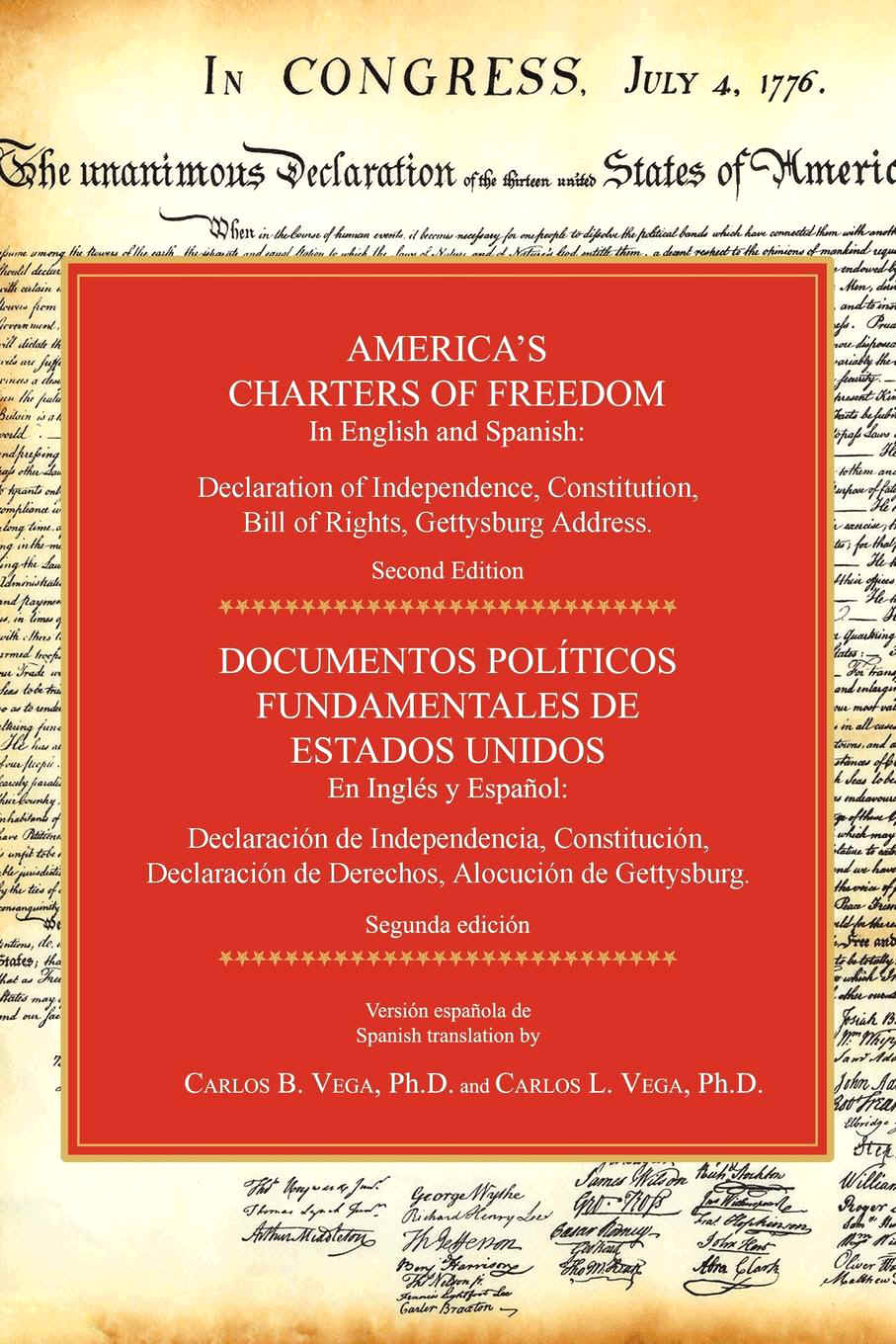 .
.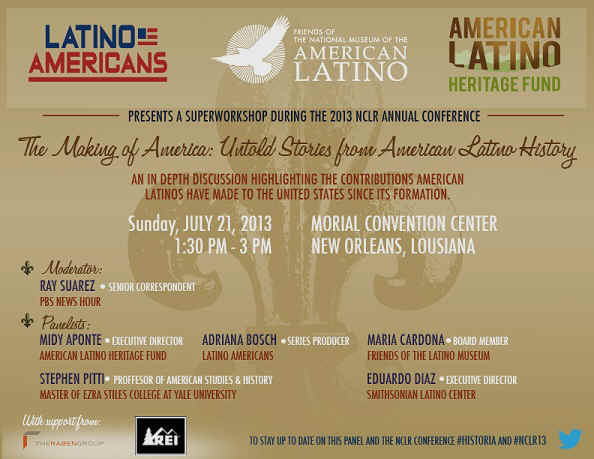



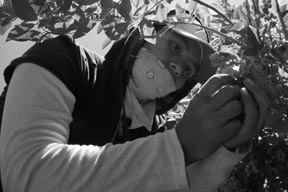 Among
a crew of immigrant farm workers picking blueberries in a field near
Dinuba (Tulare County), is 20-year-old Lorena Hernandez, the single
mother of a 4-year-old daughter, who has labored in the fields for two
years. Photo: David Bacon
Among
a crew of immigrant farm workers picking blueberries in a field near
Dinuba (Tulare County), is 20-year-old Lorena Hernandez, the single
mother of a 4-year-old daughter, who has labored in the fields for two
years. Photo: David Bacon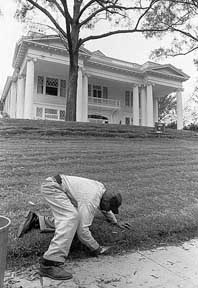 "Black
labor maintained white privilege," Matt Herron, Jackson, Miss.,
1963 Matt Herron, one of the best-known civil rights
photographers, took a photograph of a black man clipping the lawn in
front of an antebellum mansion in Mississippi. It became a visual
indictment of the lack of social equality and justice. I see the same
contradiction between the tents and shacks of farmworkers in Santa Rosa
ravines and the fields of large wineries.
"Black
labor maintained white privilege," Matt Herron, Jackson, Miss.,
1963 Matt Herron, one of the best-known civil rights
photographers, took a photograph of a black man clipping the lawn in
front of an antebellum mansion in Mississippi. It became a visual
indictment of the lack of social equality and justice. I see the same
contradiction between the tents and shacks of farmworkers in Santa Rosa
ravines and the fields of large wineries.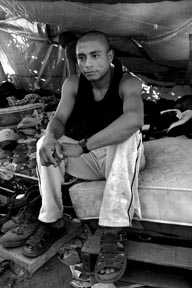 "A
young man in his sleeping tent in a camp set up by migrant indigenous
workers from Oaxaca, who live under tarps next to a field of wine
grapes," David Bacon, Graton, Sonoma County, 2003
"A
young man in his sleeping tent in a camp set up by migrant indigenous
workers from Oaxaca, who live under tarps next to a field of wine
grapes," David Bacon, Graton, Sonoma County, 2003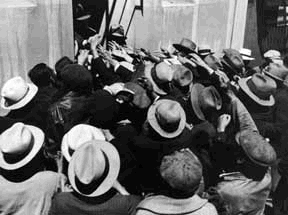
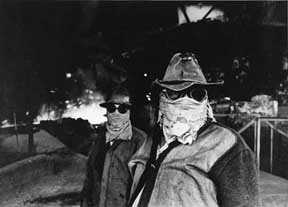 Altos
hornos, Fundidores de Monclova, Coahuila, Hector Garcia, 1960. Today,
the right to travel to seek work is a matter of survival, and a new
generation of photographers documents the migrant-rights movements in
both Mexico and the United States (with its parallels to the civil
rights movement of past generations). Like many others in this movement,
I use the combination of photographs and oral histories to connect words
and voices to images - together they help capture a complex social
reality as well as people's ideas for changing it.
Altos
hornos, Fundidores de Monclova, Coahuila, Hector Garcia, 1960. Today,
the right to travel to seek work is a matter of survival, and a new
generation of photographers documents the migrant-rights movements in
both Mexico and the United States (with its parallels to the civil
rights movement of past generations). Like many others in this movement,
I use the combination of photographs and oral histories to connect words
and voices to images - together they help capture a complex social
reality as well as people's ideas for changing it.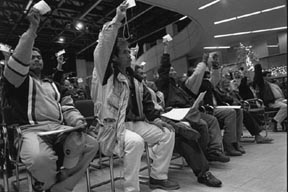 "Members
of the Binational Front of Indigenous Organizations vote to expel
a former leader, Arturo Pimentel, for failing to be accountable to the
membership of their organization. The profoundly democratic process of
the Frente Frente Indígena de Organizaciones Binacionales is based on
the communal decision-making tradition of indigenous communities in
Oaxaca," David Bacon, Tijuana, Baja California, 1999
"Members
of the Binational Front of Indigenous Organizations vote to expel
a former leader, Arturo Pimentel, for failing to be accountable to the
membership of their organization. The profoundly democratic process of
the Frente Frente Indígena de Organizaciones Binacionales is based on
the communal decision-making tradition of indigenous communities in
Oaxaca," David Bacon, Tijuana, Baja California, 1999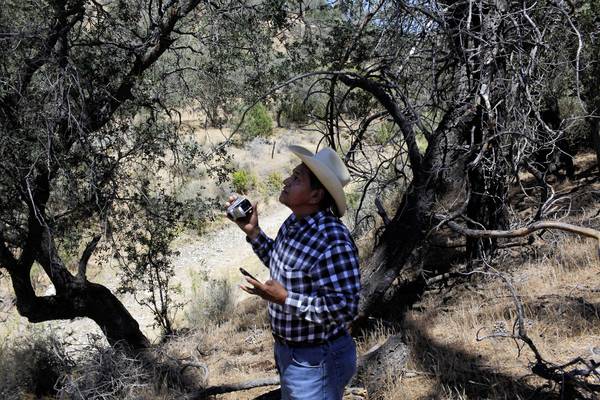 Jaime Ramirez's
grandfather and uncle were aboard the DC-3 that crashed near Coalinga in
1948.Jaime Ramirez stood in front of an oak tree, jagged and black from
a plane crashing into it all those years ago. He removed his white
cowboy hat, closed his eyes and whispered, "Abuelo, Tio, estoy aqui."
("Grandfather, Uncle, I am here.")
Jaime Ramirez's
grandfather and uncle were aboard the DC-3 that crashed near Coalinga in
1948.Jaime Ramirez stood in front of an oak tree, jagged and black from
a plane crashing into it all those years ago. He removed his white
cowboy hat, closed his eyes and whispered, "Abuelo, Tio, estoy aqui."
("Grandfather, Uncle, I am here.")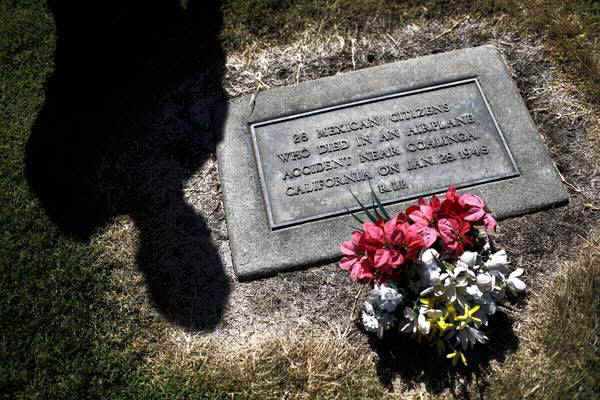
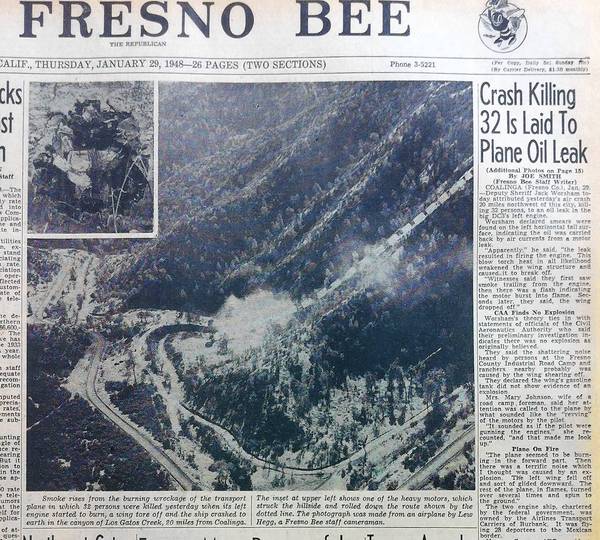 B
B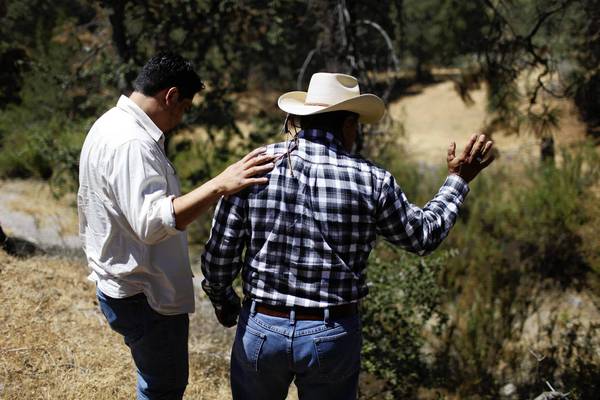 In
late June in Coalinga, Ramirez met Hernandez for the first time. He told
the writer about his grandfather, Ramon Paredes Gonzales, and his
great-uncle, Guadalupe Ramirez Lara. They
drove up the winding canyon and walked through whispering dried grass to
the tree where the plane crashed. Hernandez reached out his hands to the
tree and ravine.
In
late June in Coalinga, Ramirez met Hernandez for the first time. He told
the writer about his grandfather, Ramon Paredes Gonzales, and his
great-uncle, Guadalupe Ramirez Lara. They
drove up the winding canyon and walked through whispering dried grass to
the tree where the plane crashed. Hernandez reached out his hands to the
tree and ravine.
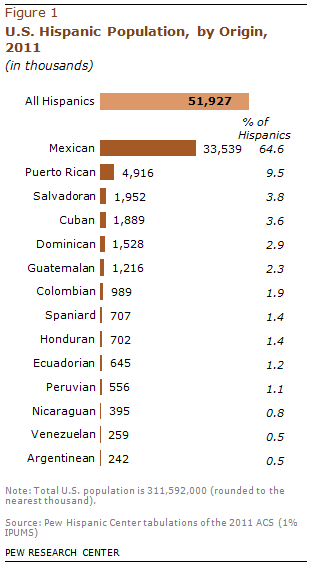
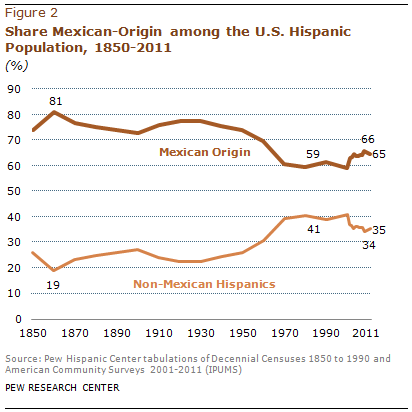


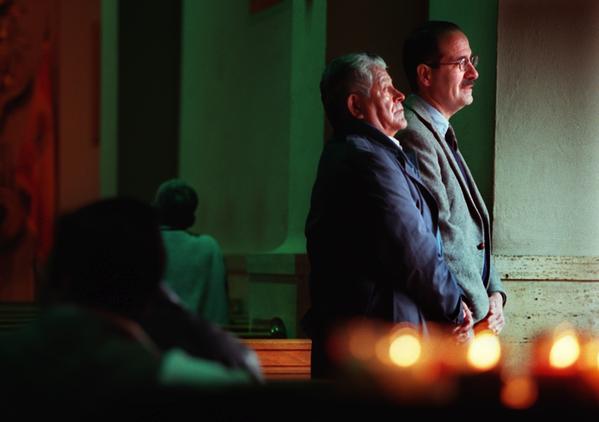
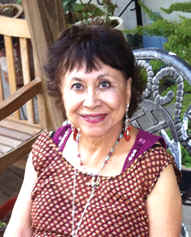

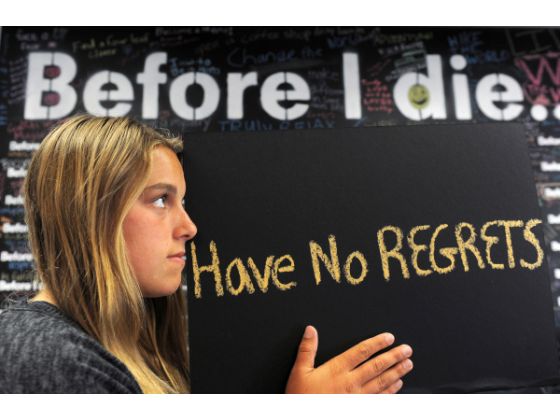



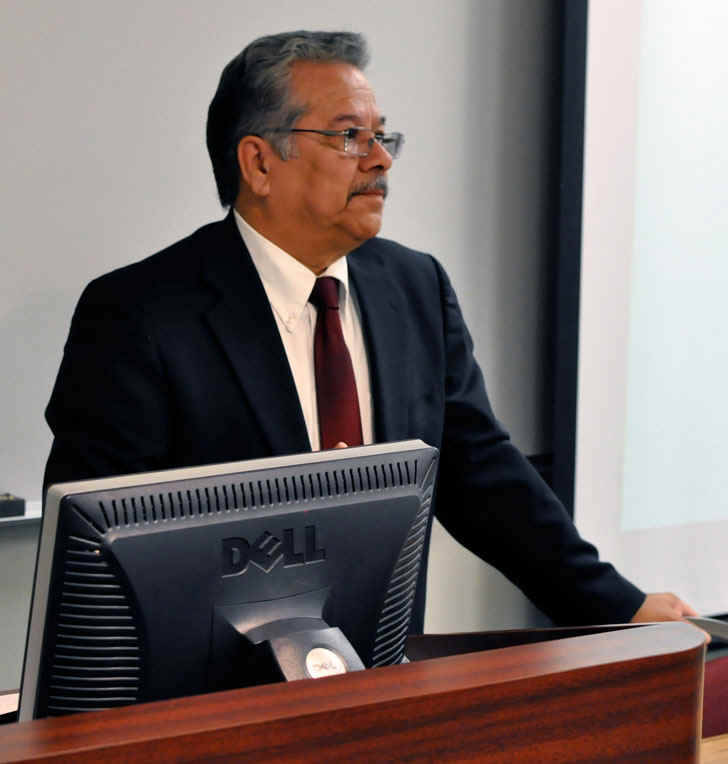
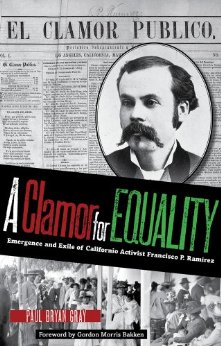

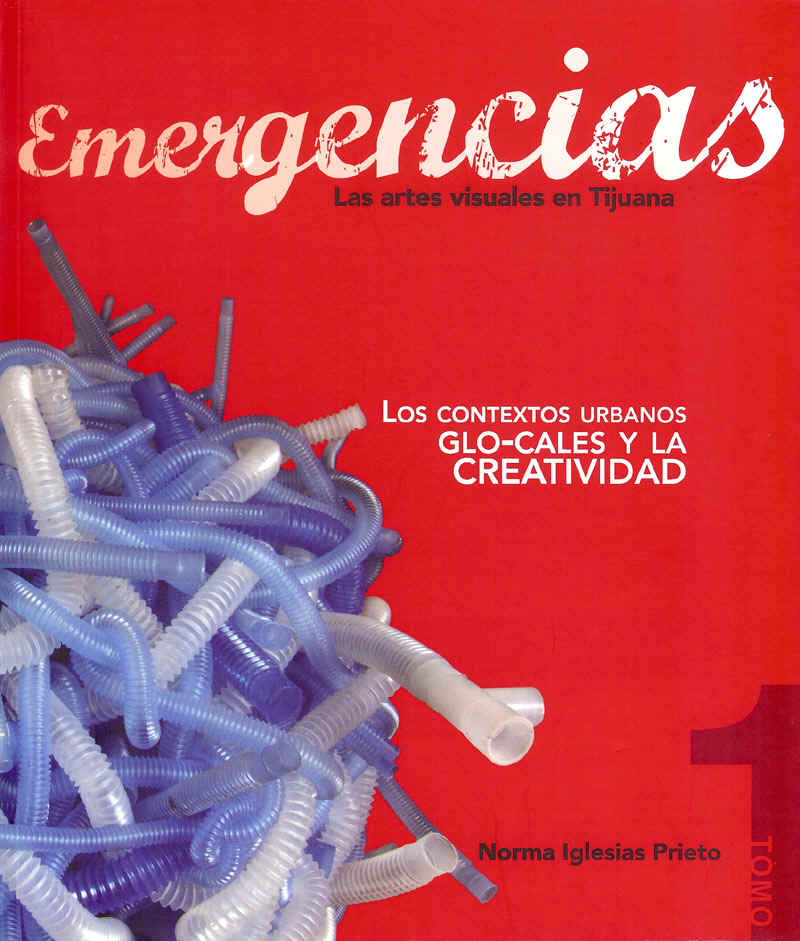
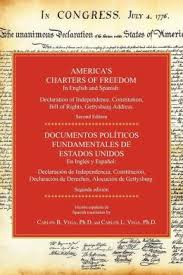
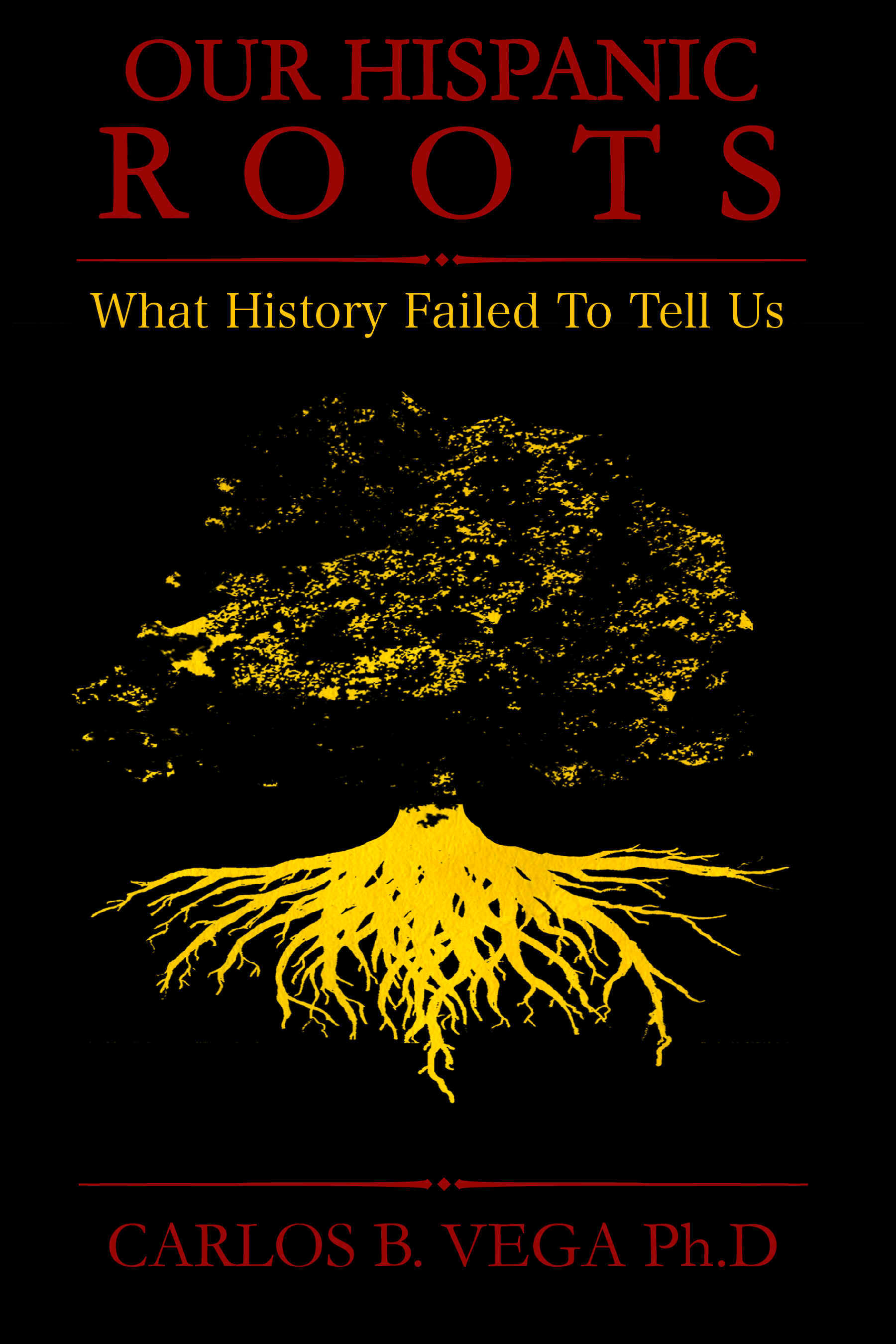
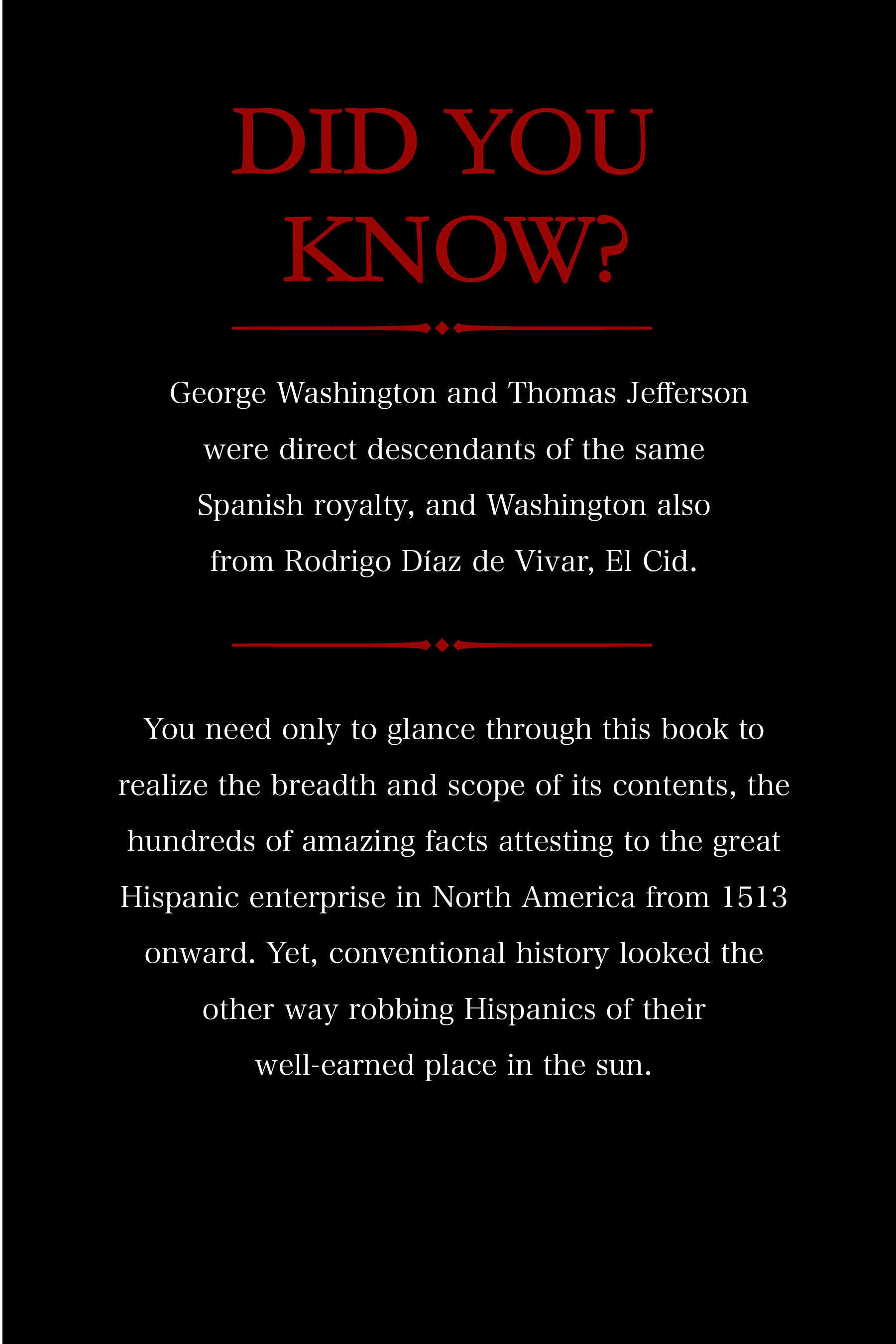
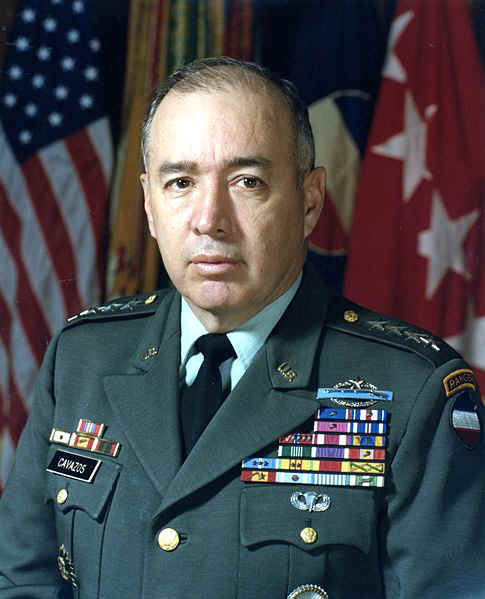
 Source
of information: Wikipedia, the free encyclopedia
Source
of information: Wikipedia, the free encyclopedia




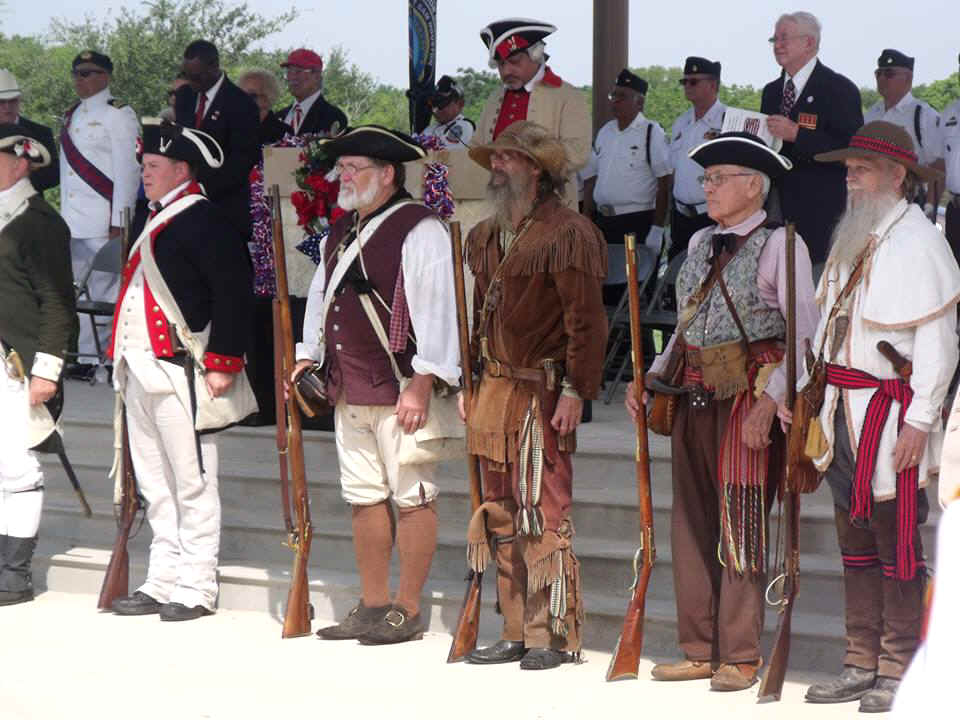
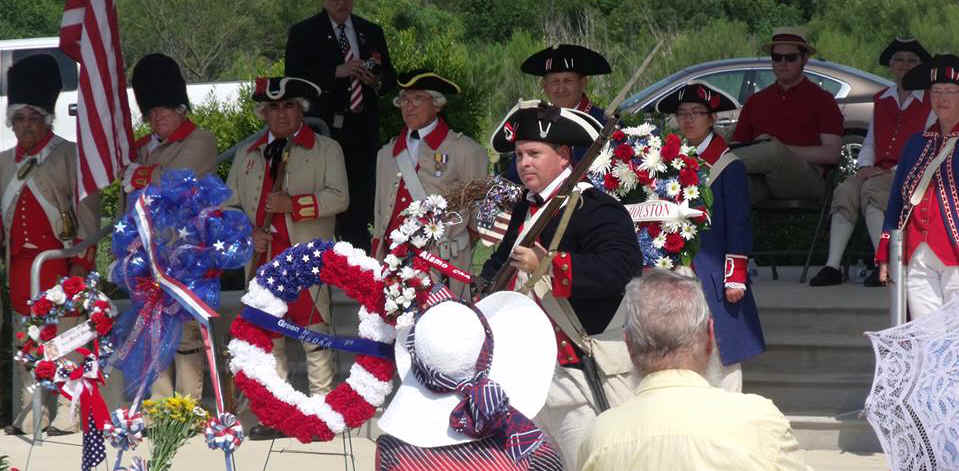
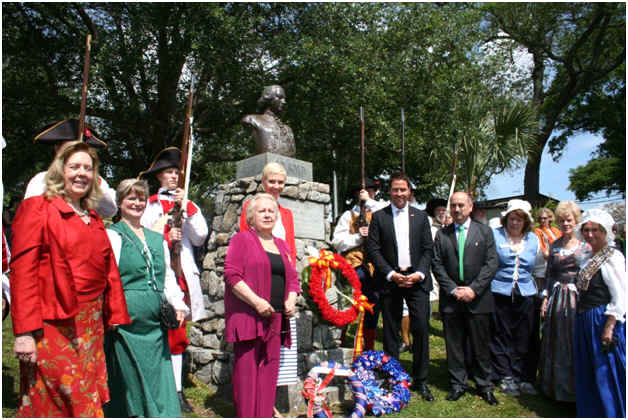
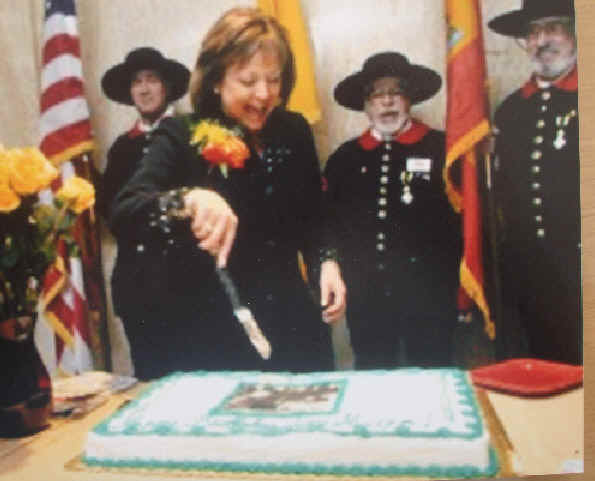
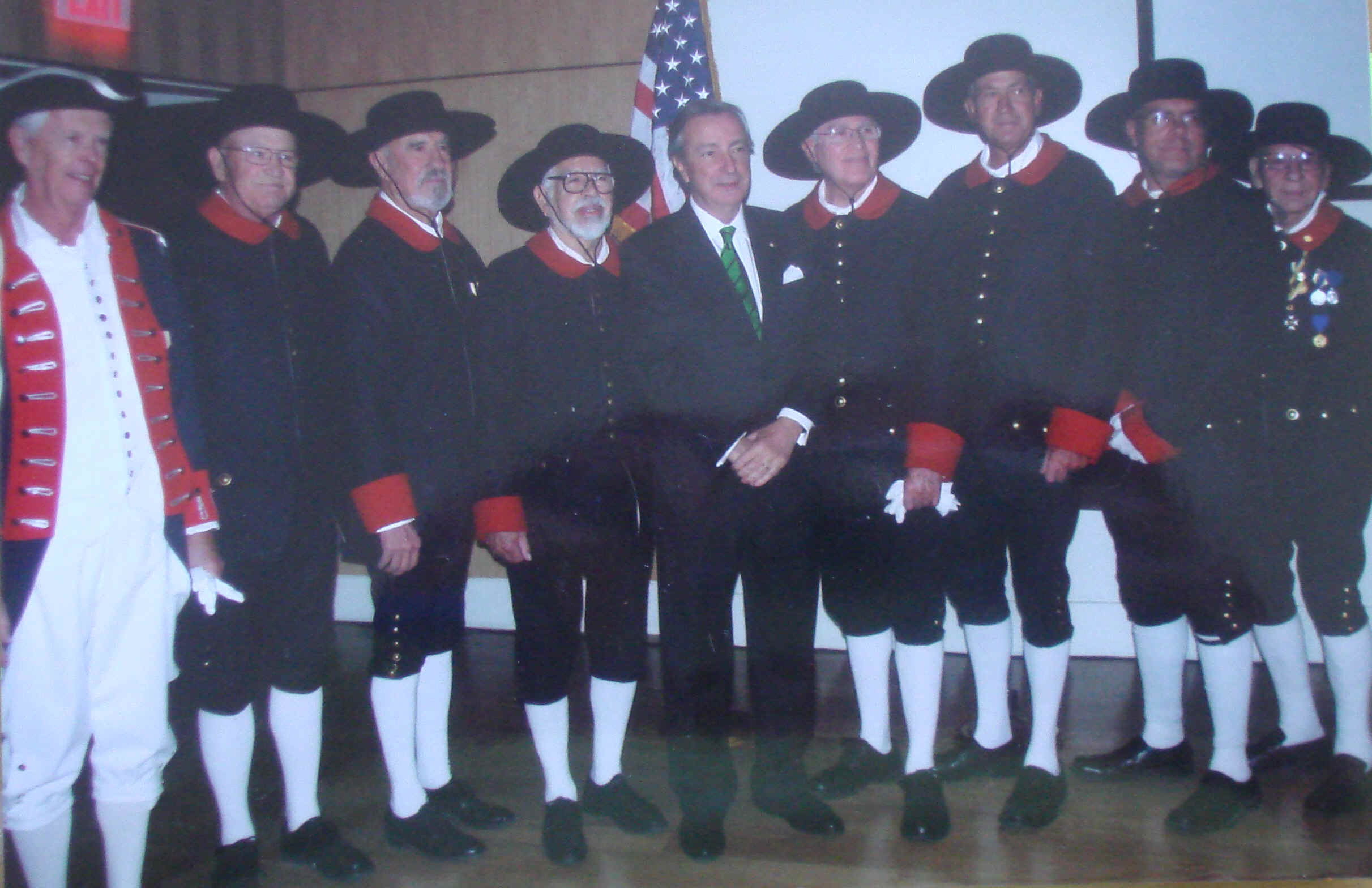
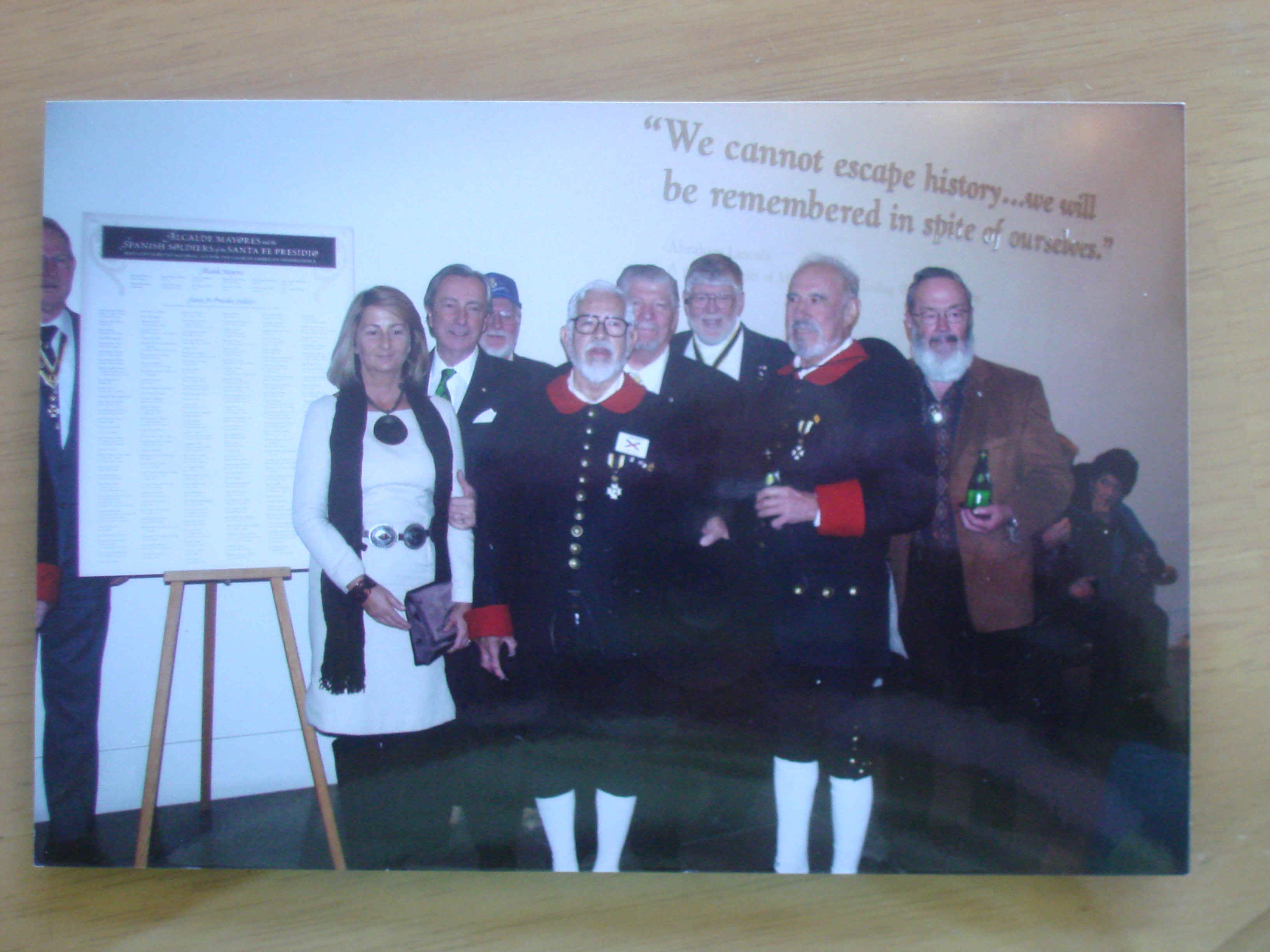 NMSSAR, presented this poster with the Spanish Ambassador, Jorge
Dezcallar to the NM
Museum of New Mexico. It was a great honor to participate
with the
Spanish Ambassador. It was a great event as our Color Guard presented
the Colors. Four of us are direct decedents of some of the
soldiers. My 7th great grandfather, Jose Vicente Garcia de Noriega being
one of them.
NMSSAR, presented this poster with the Spanish Ambassador, Jorge
Dezcallar to the NM
Museum of New Mexico. It was a great honor to participate
with the
Spanish Ambassador. It was a great event as our Color Guard presented
the Colors. Four of us are direct decedents of some of the
soldiers. My 7th great grandfather, Jose Vicente Garcia de Noriega being
one of them.
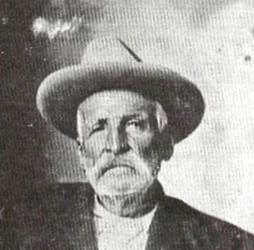
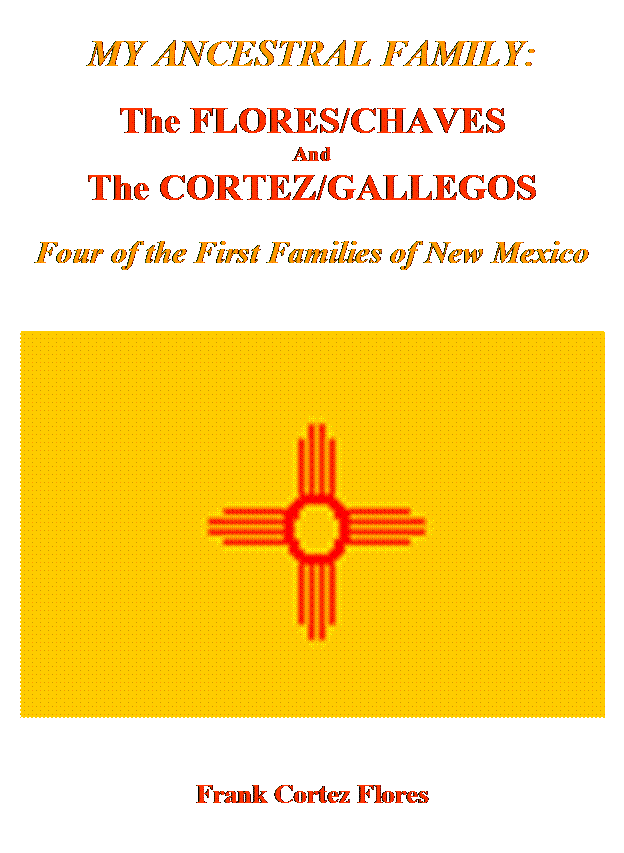

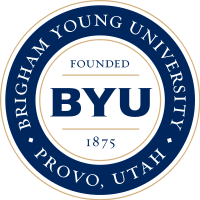 Familias
que cruzaron fronteras
Familias
que cruzaron fronteras

